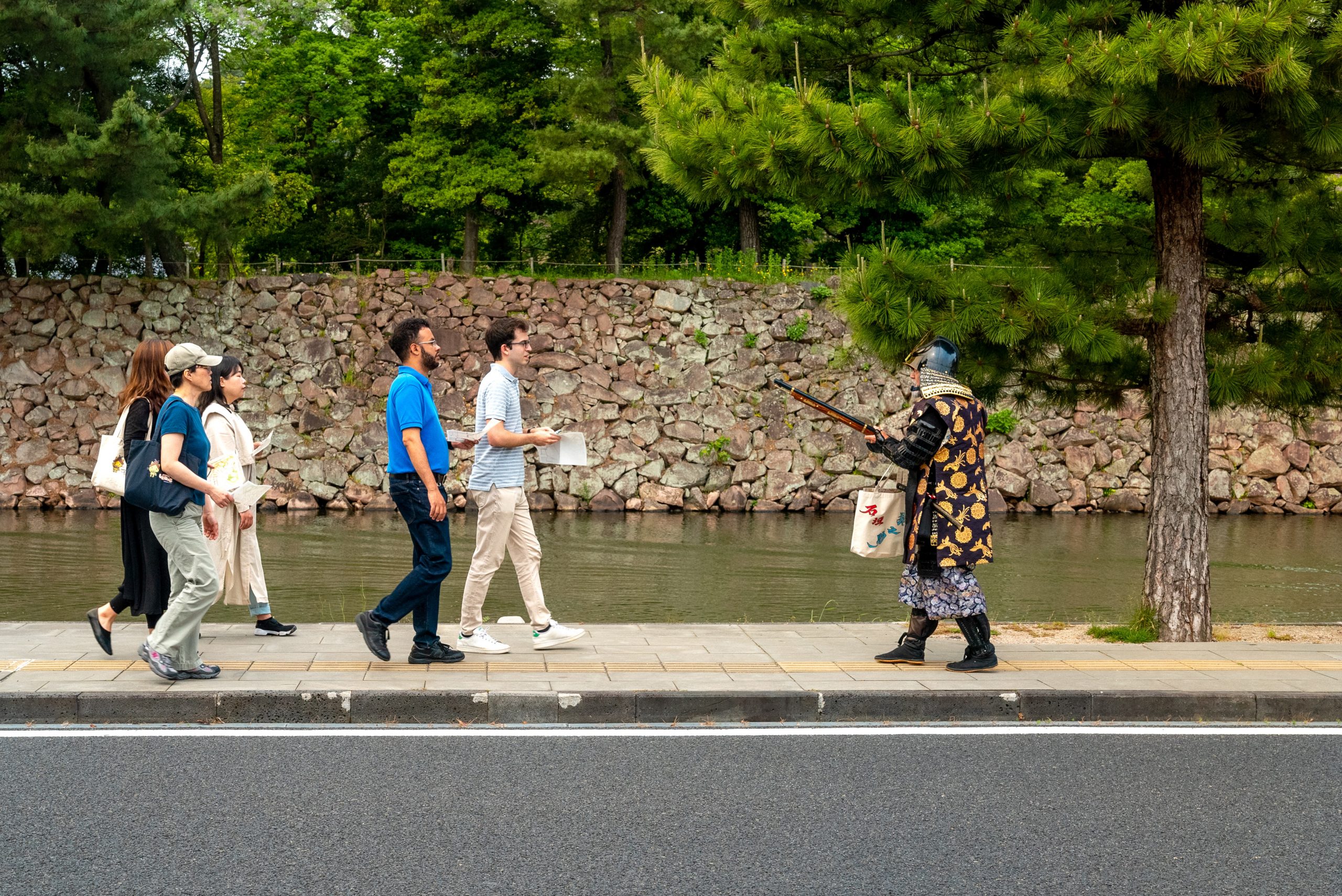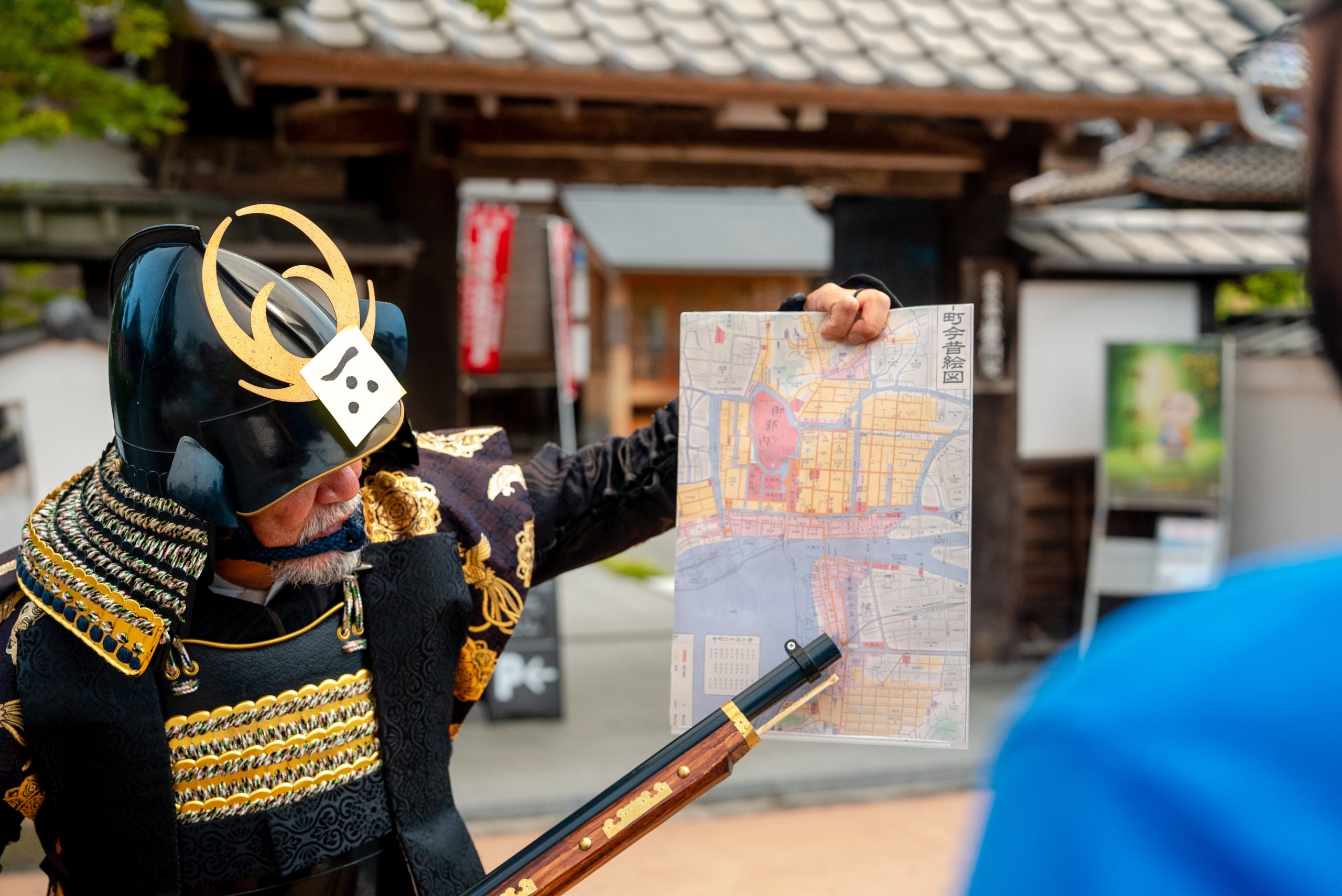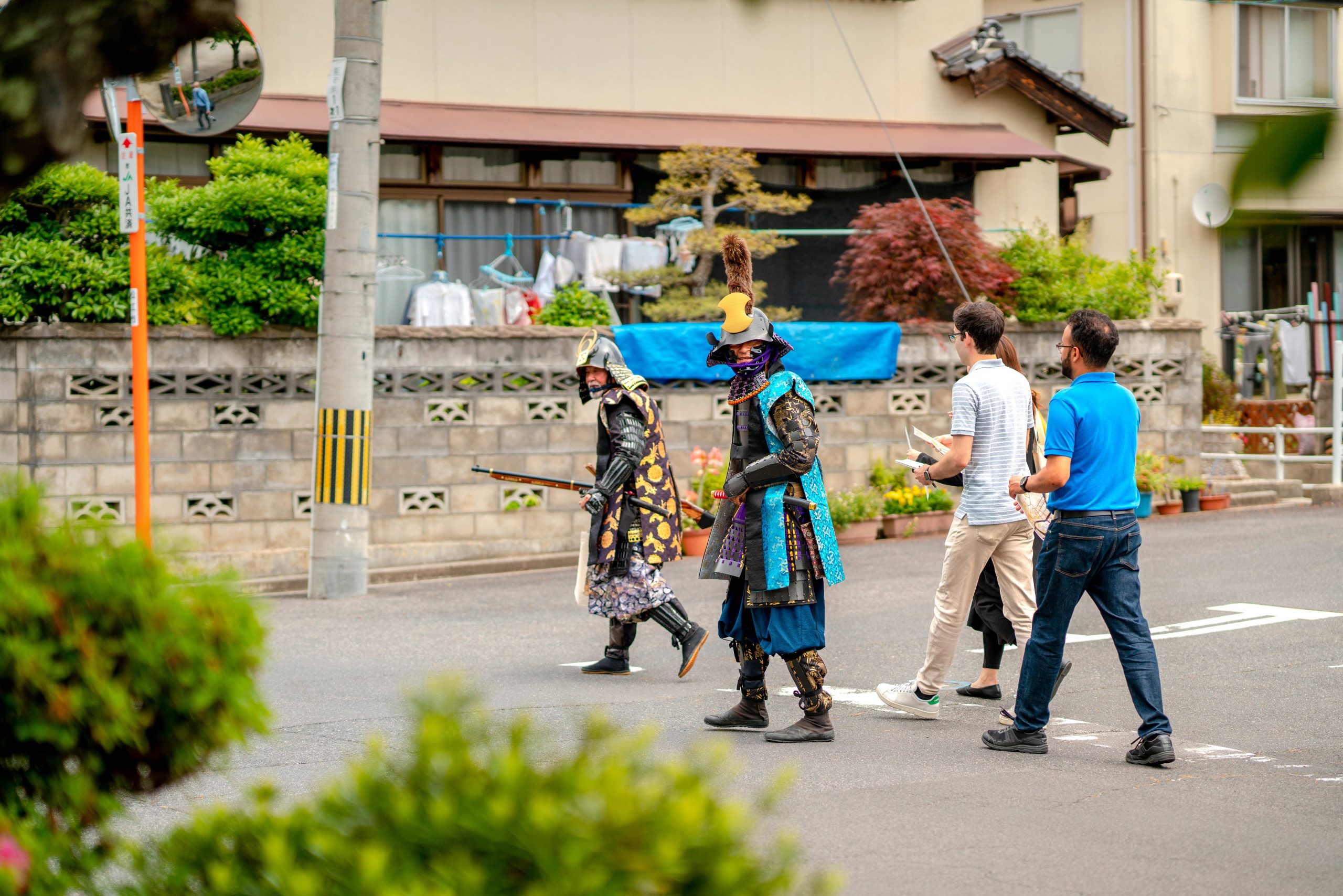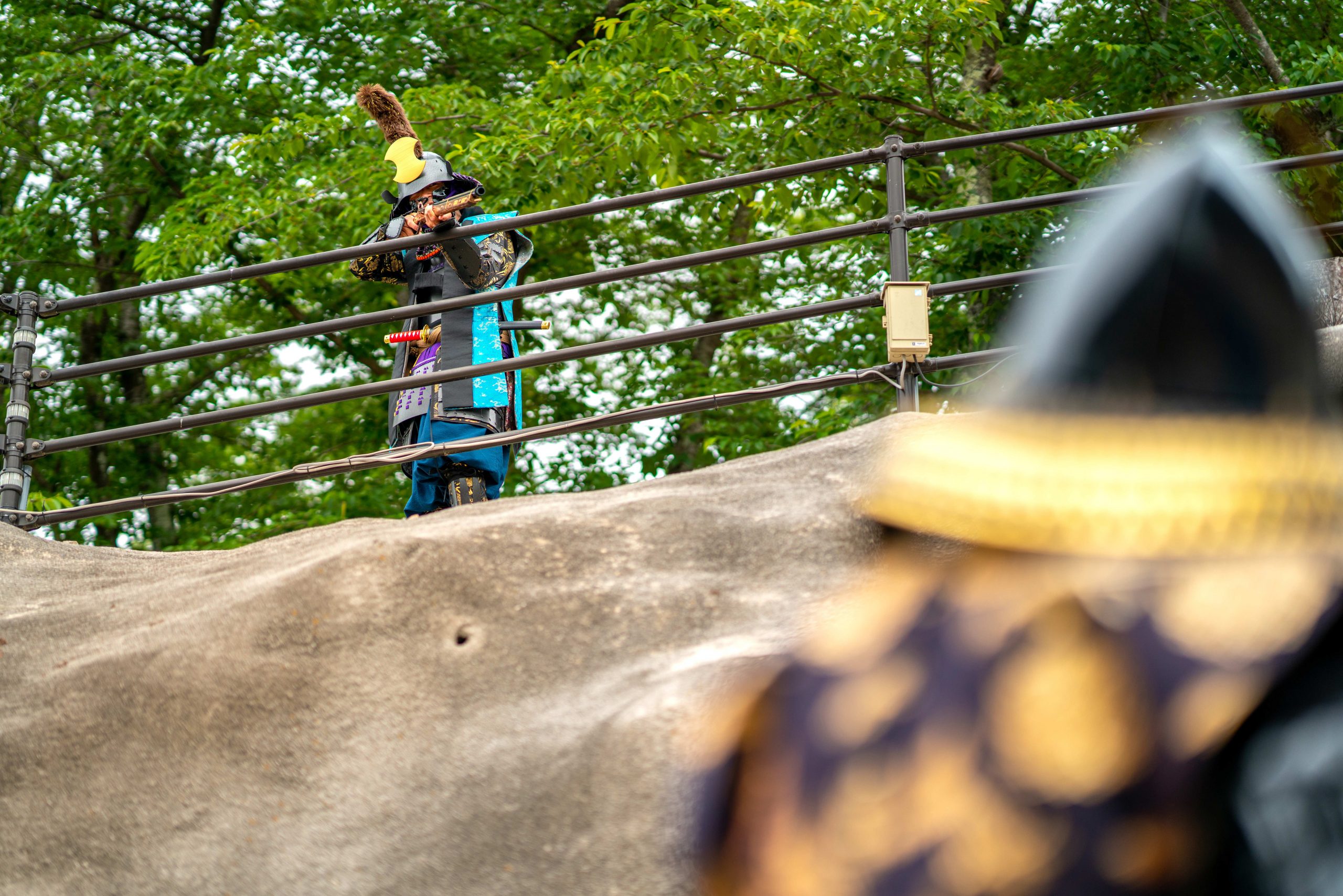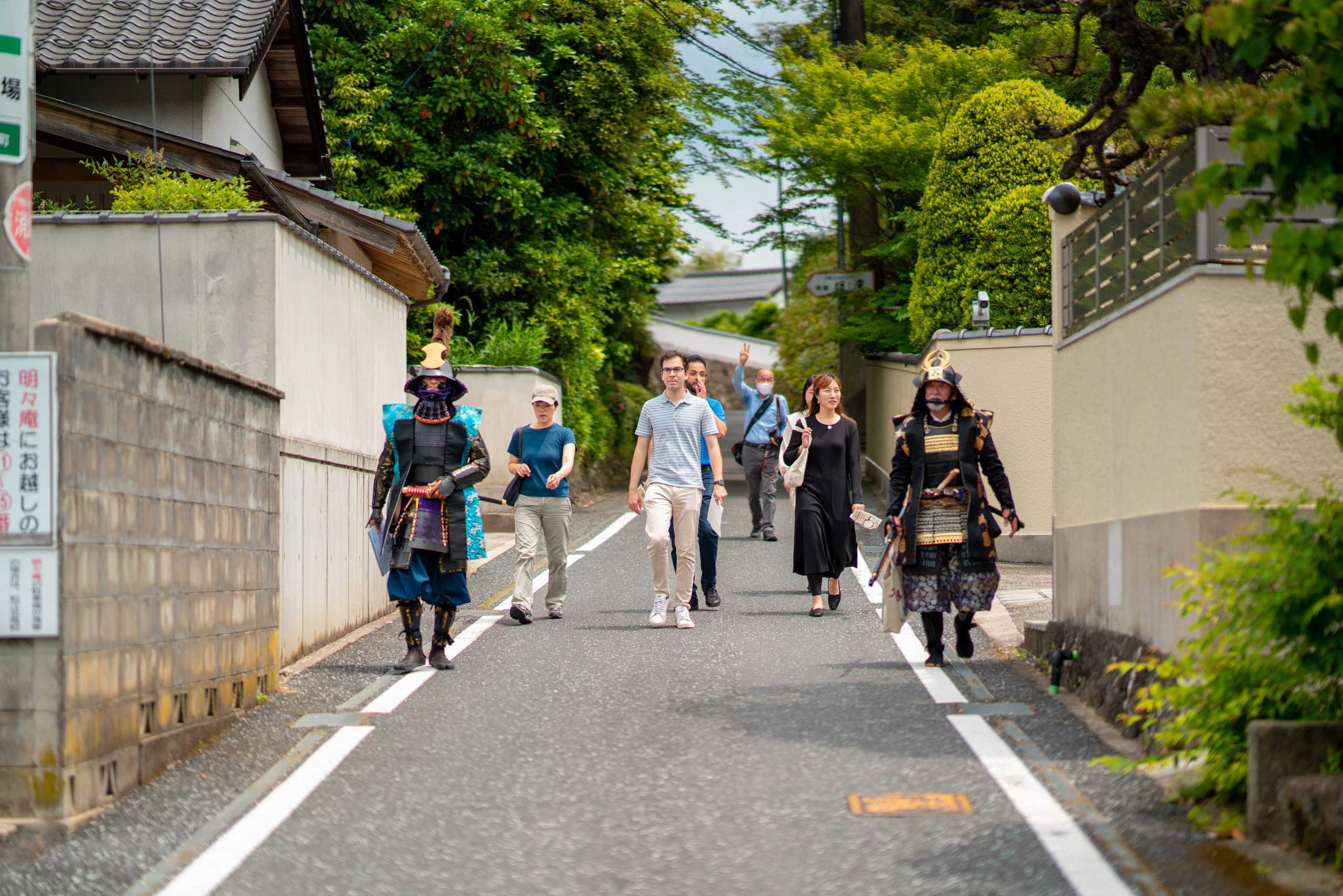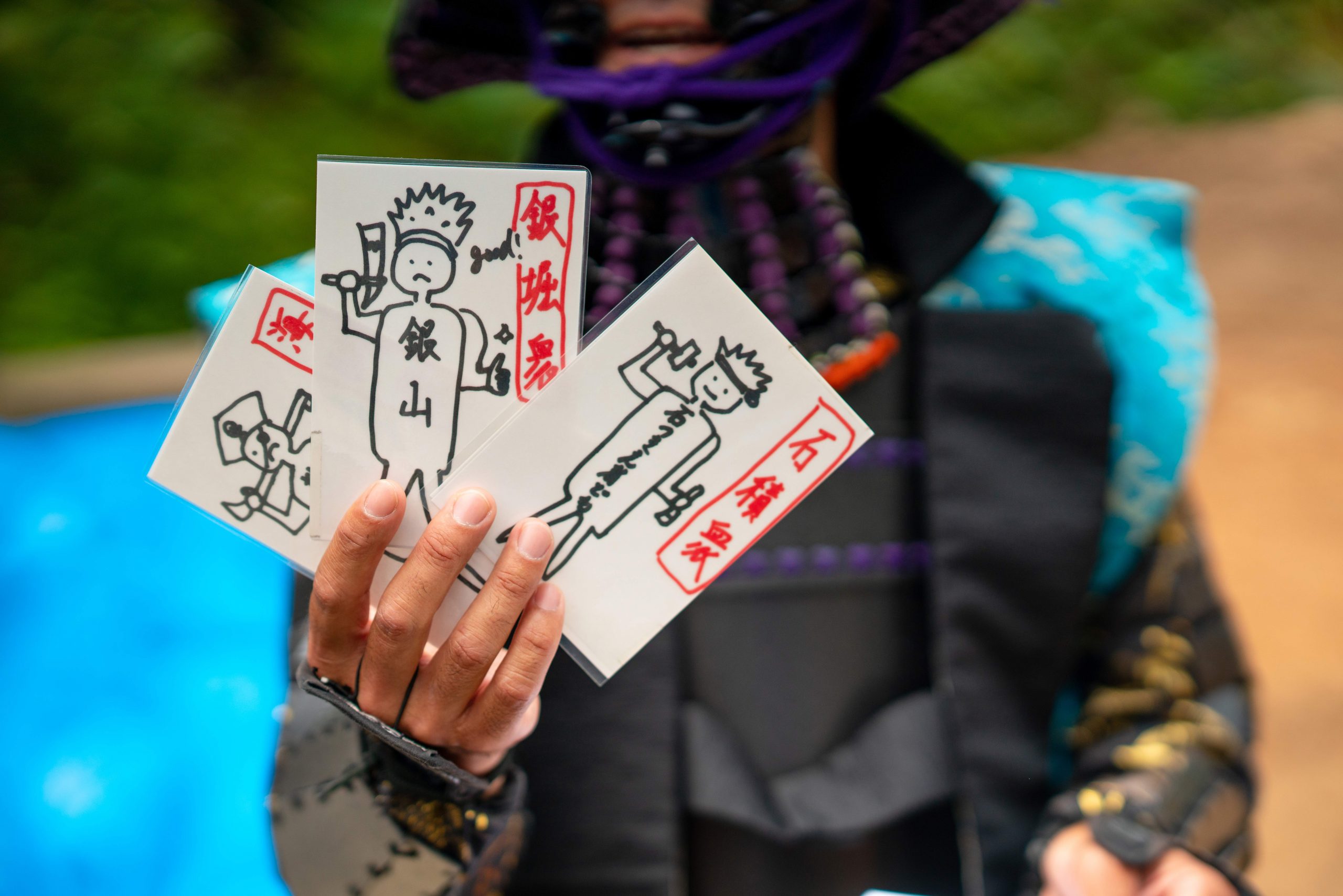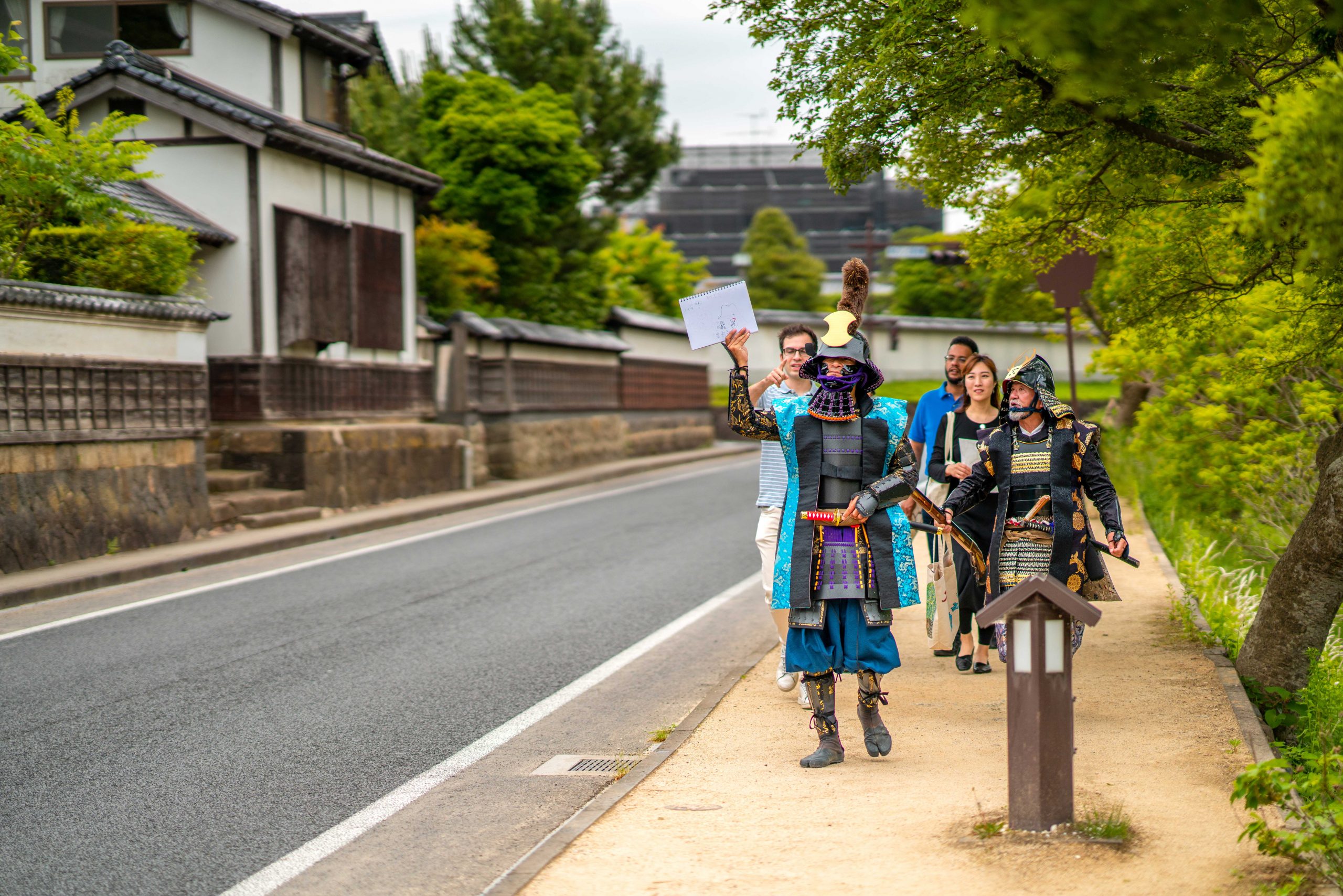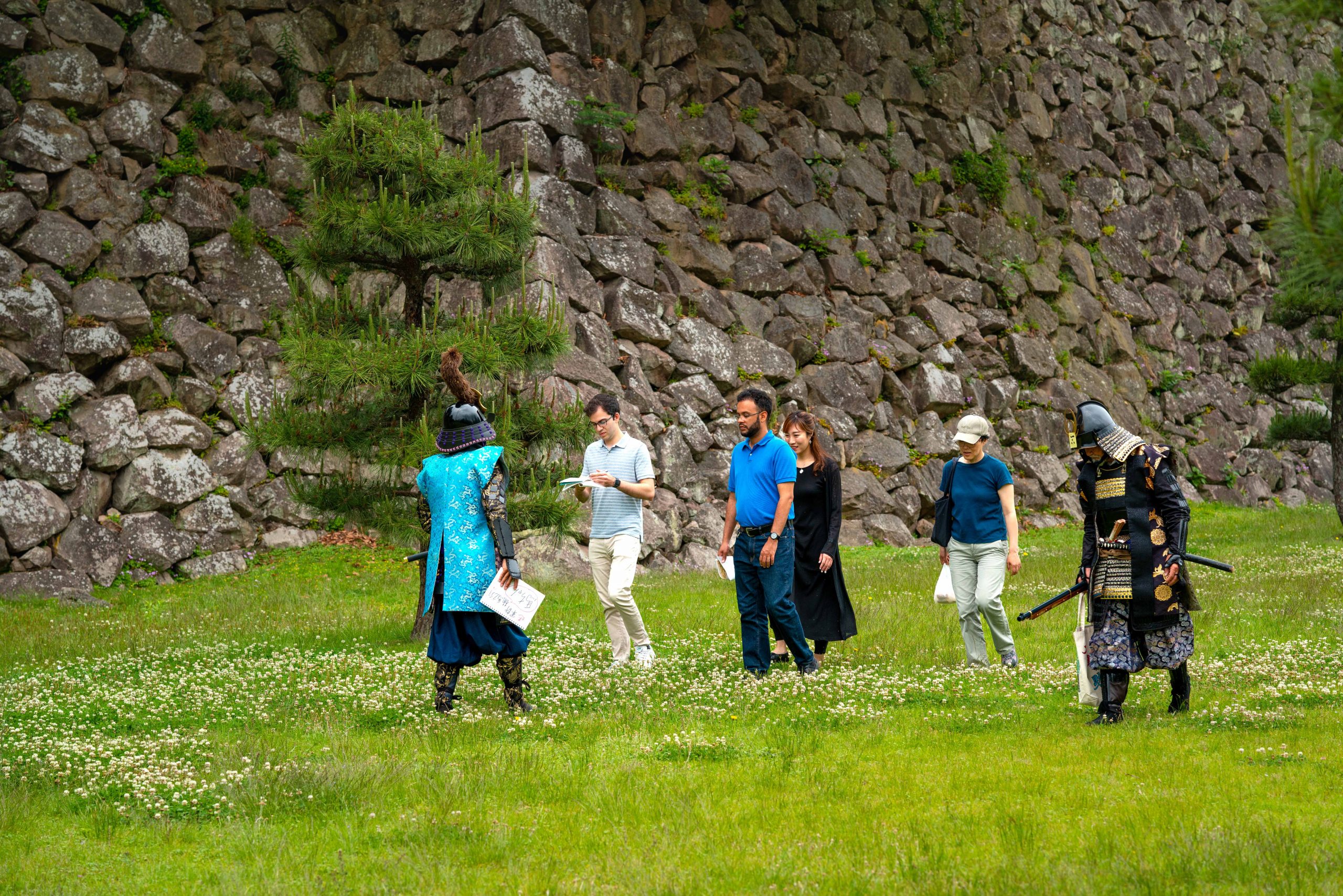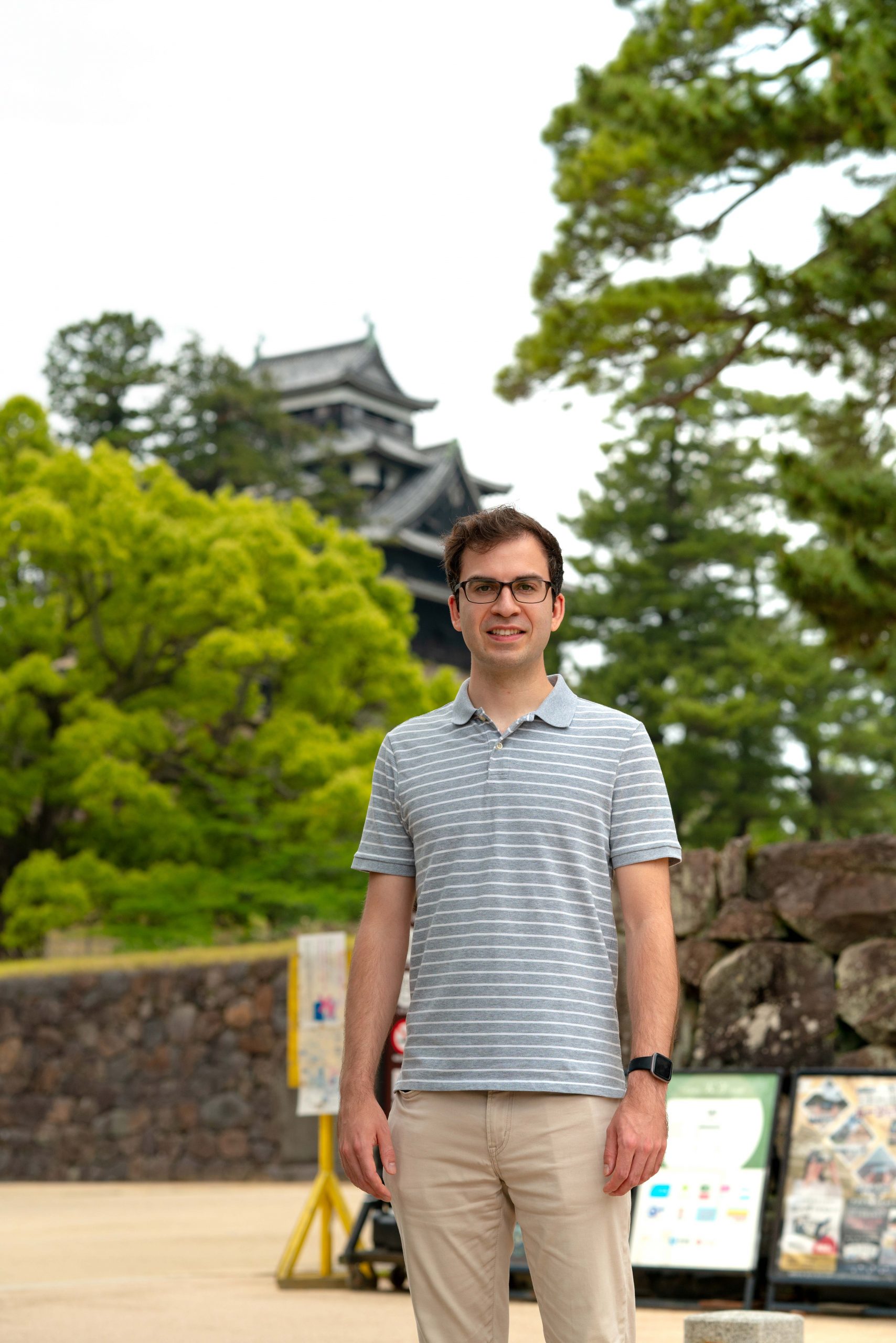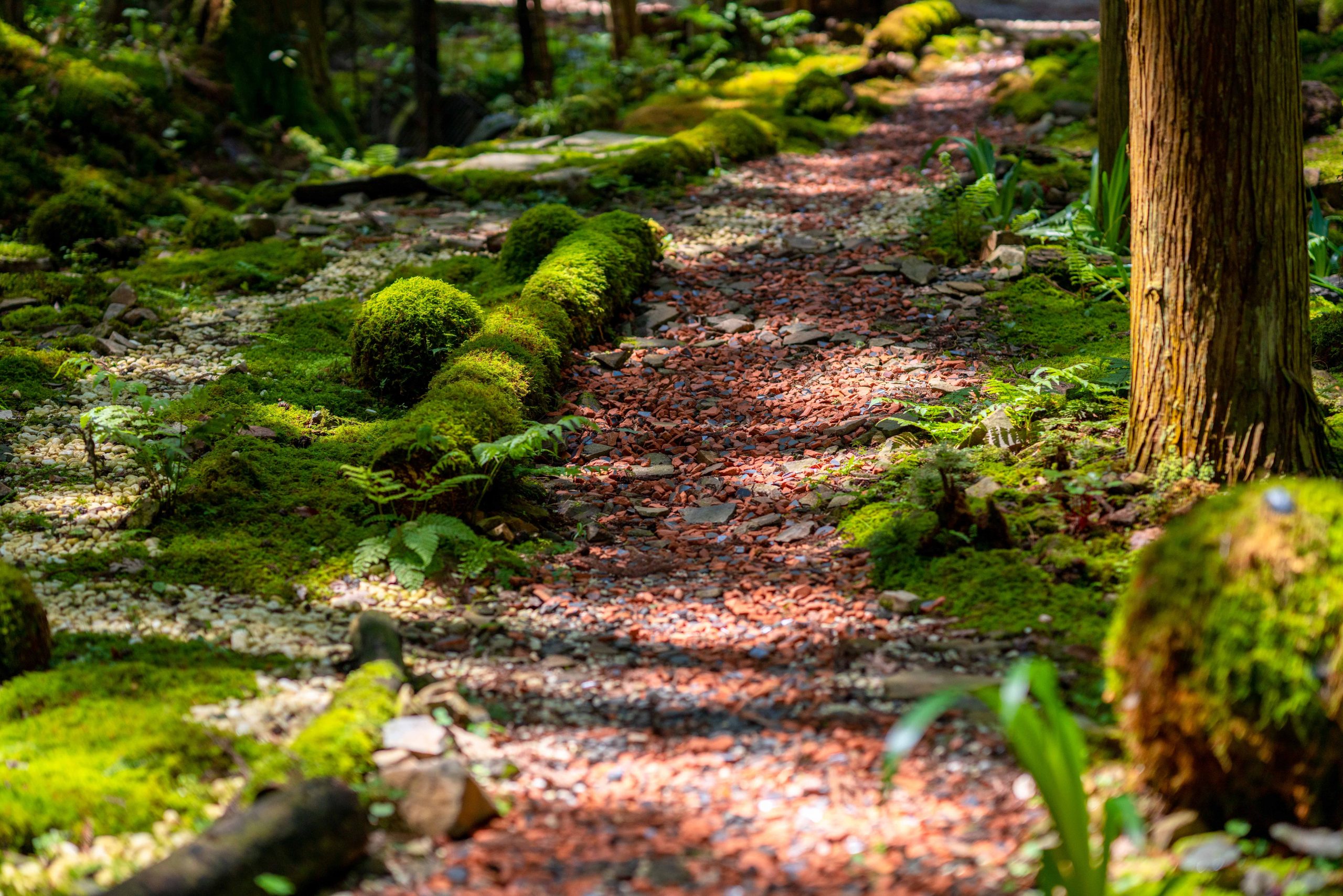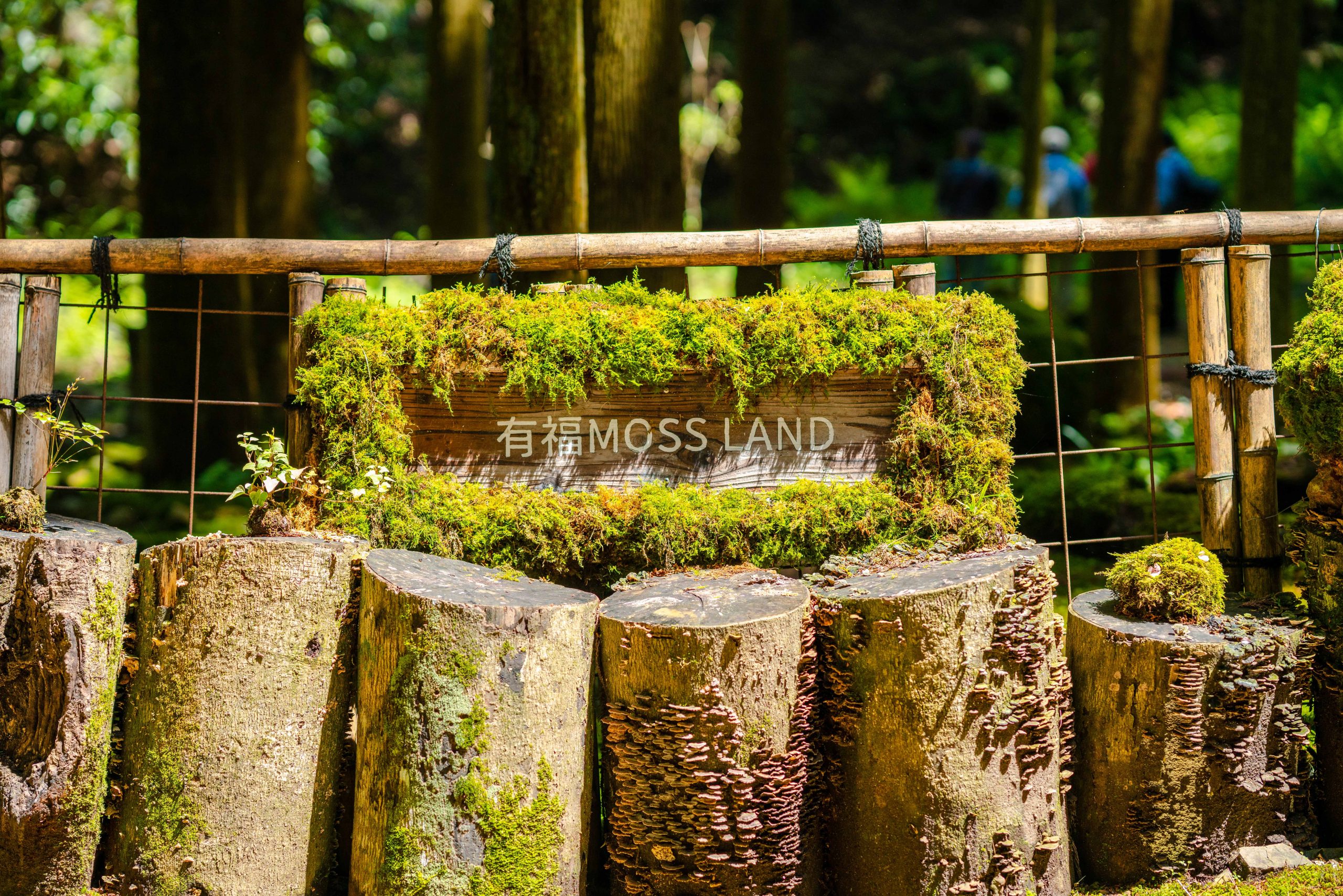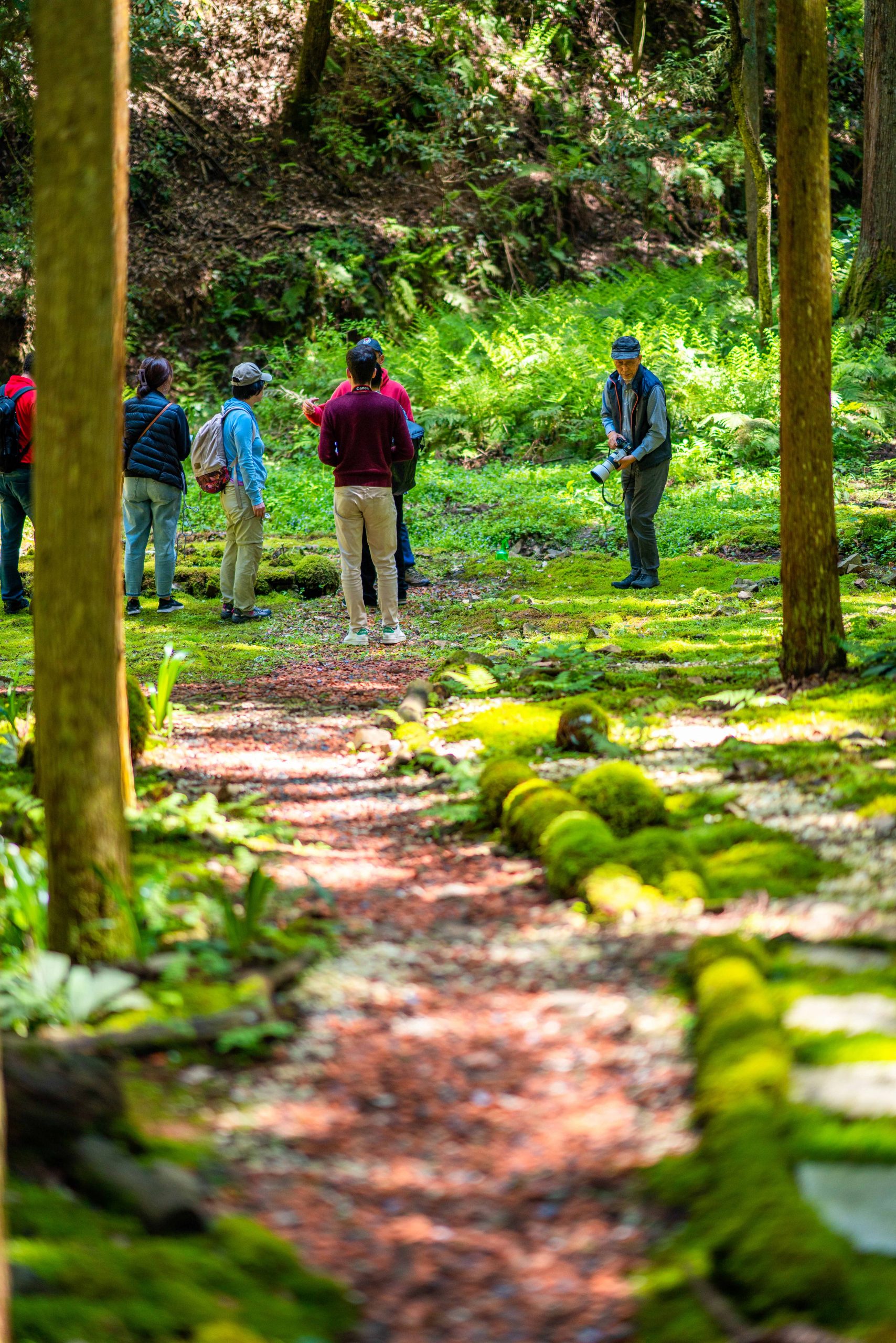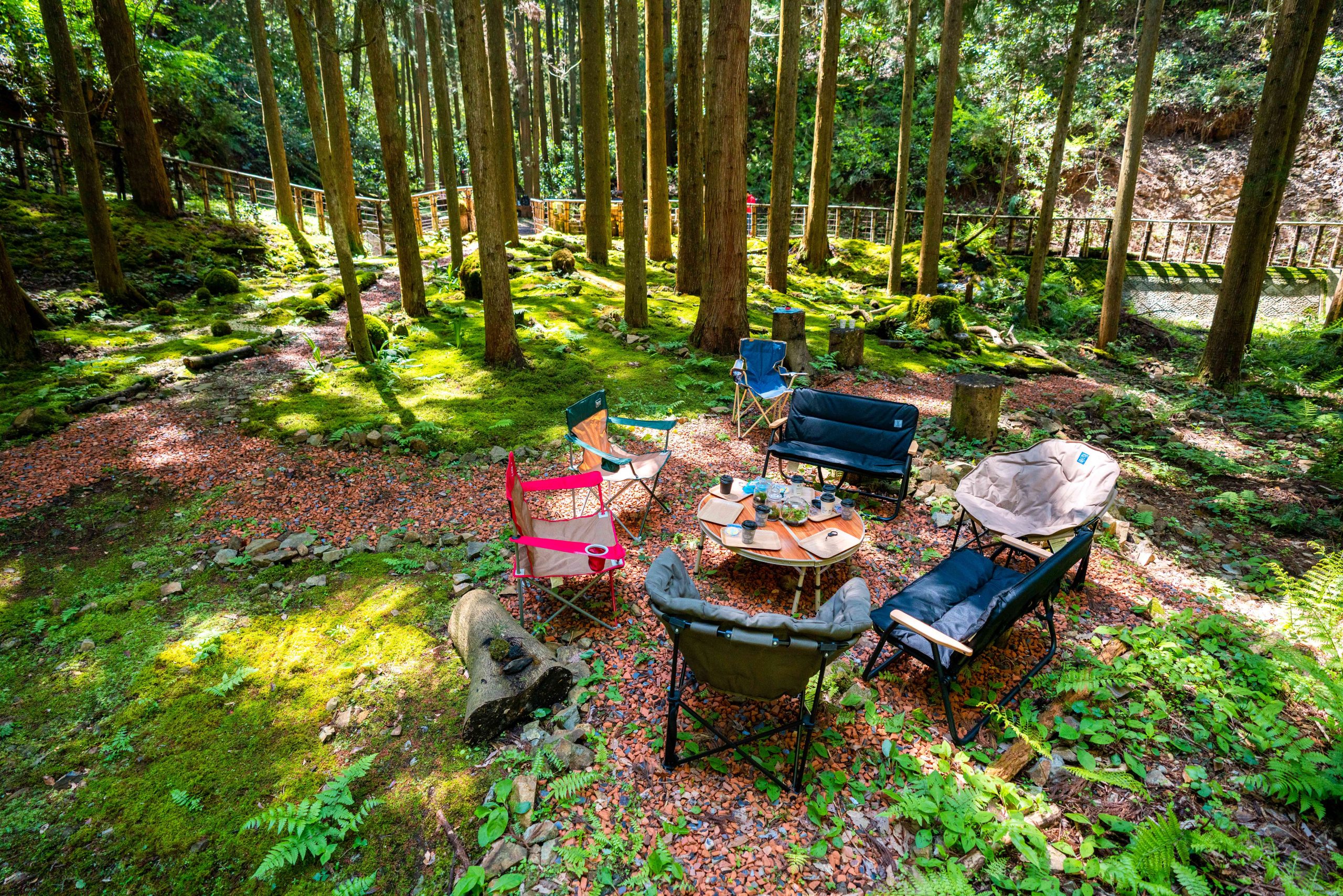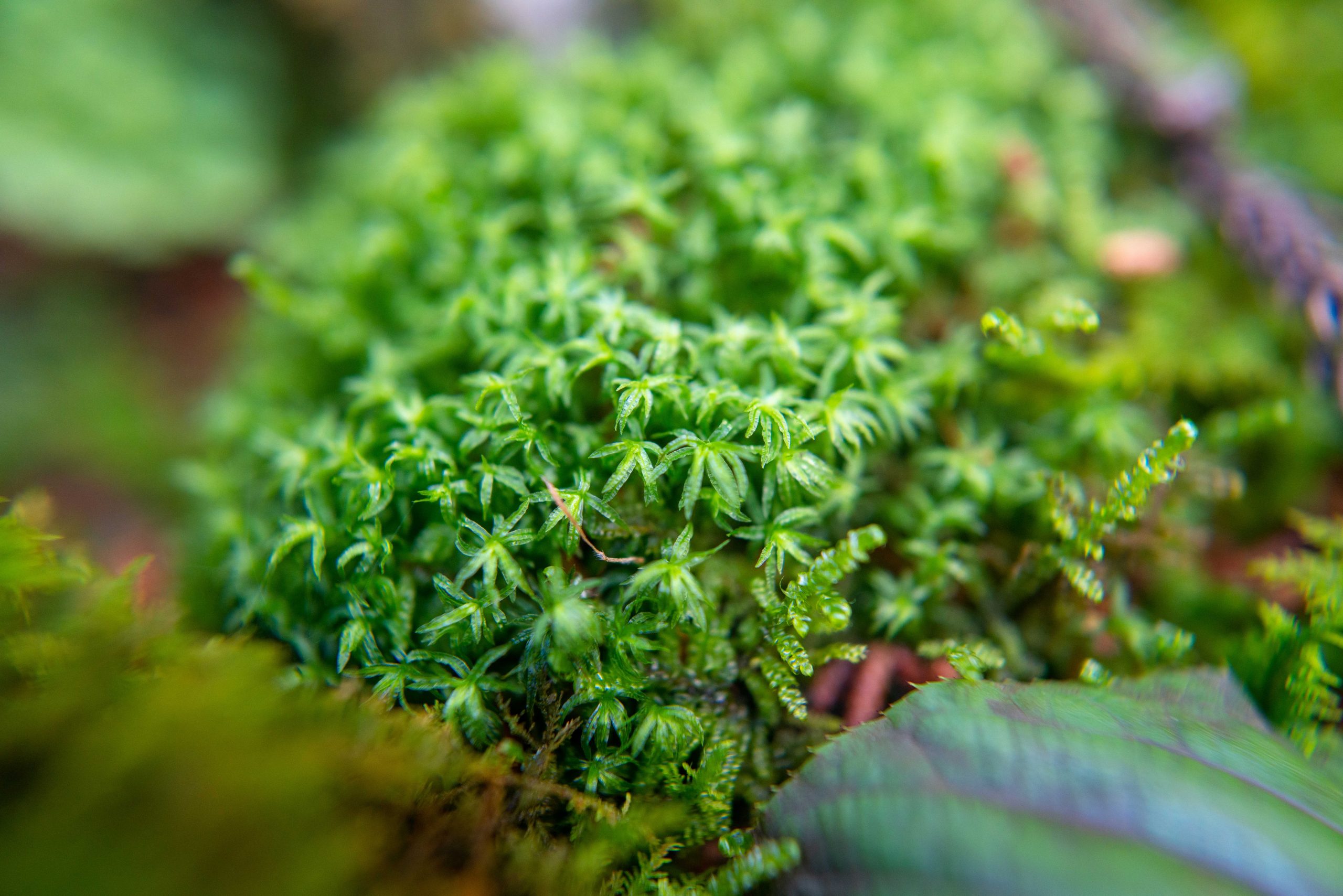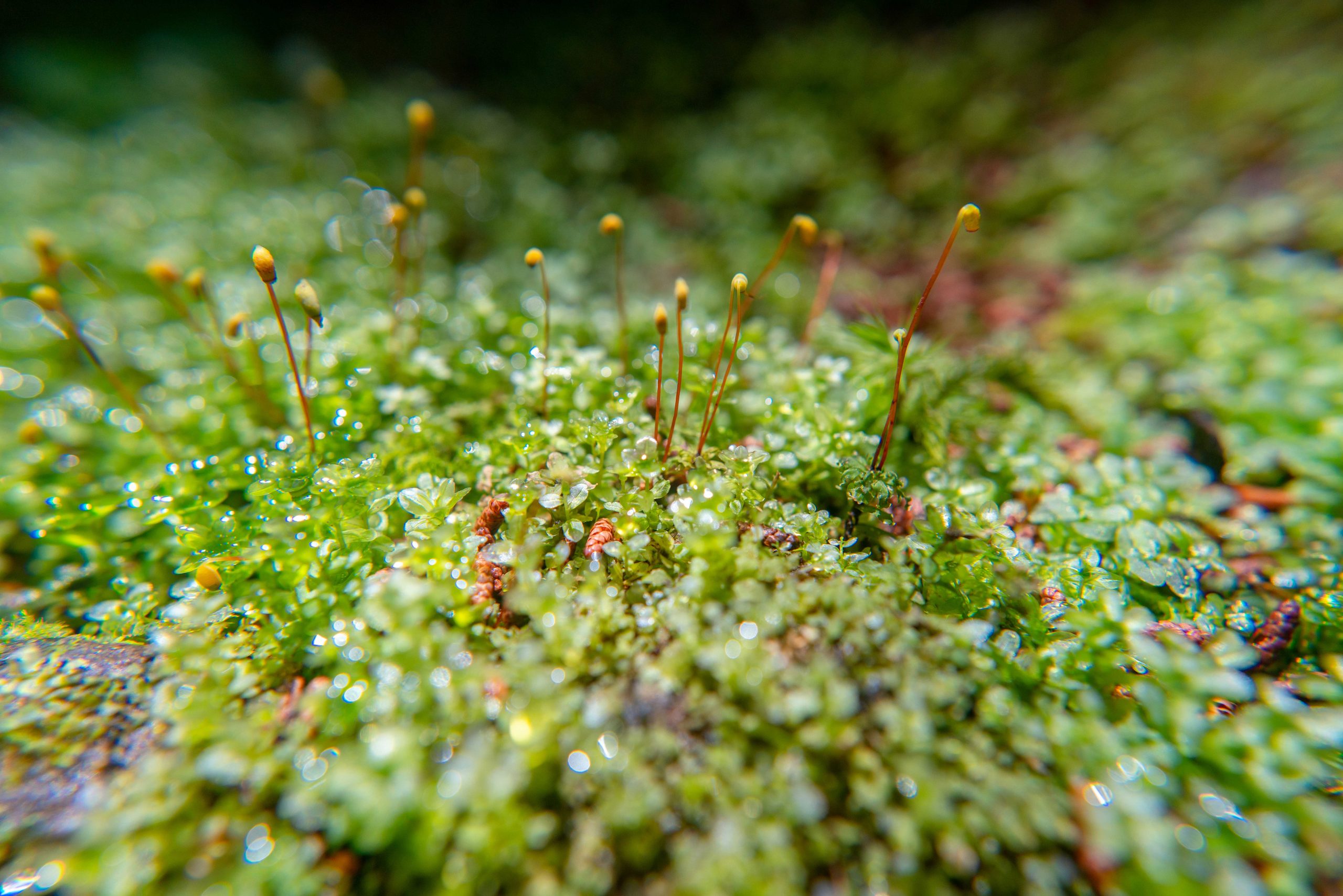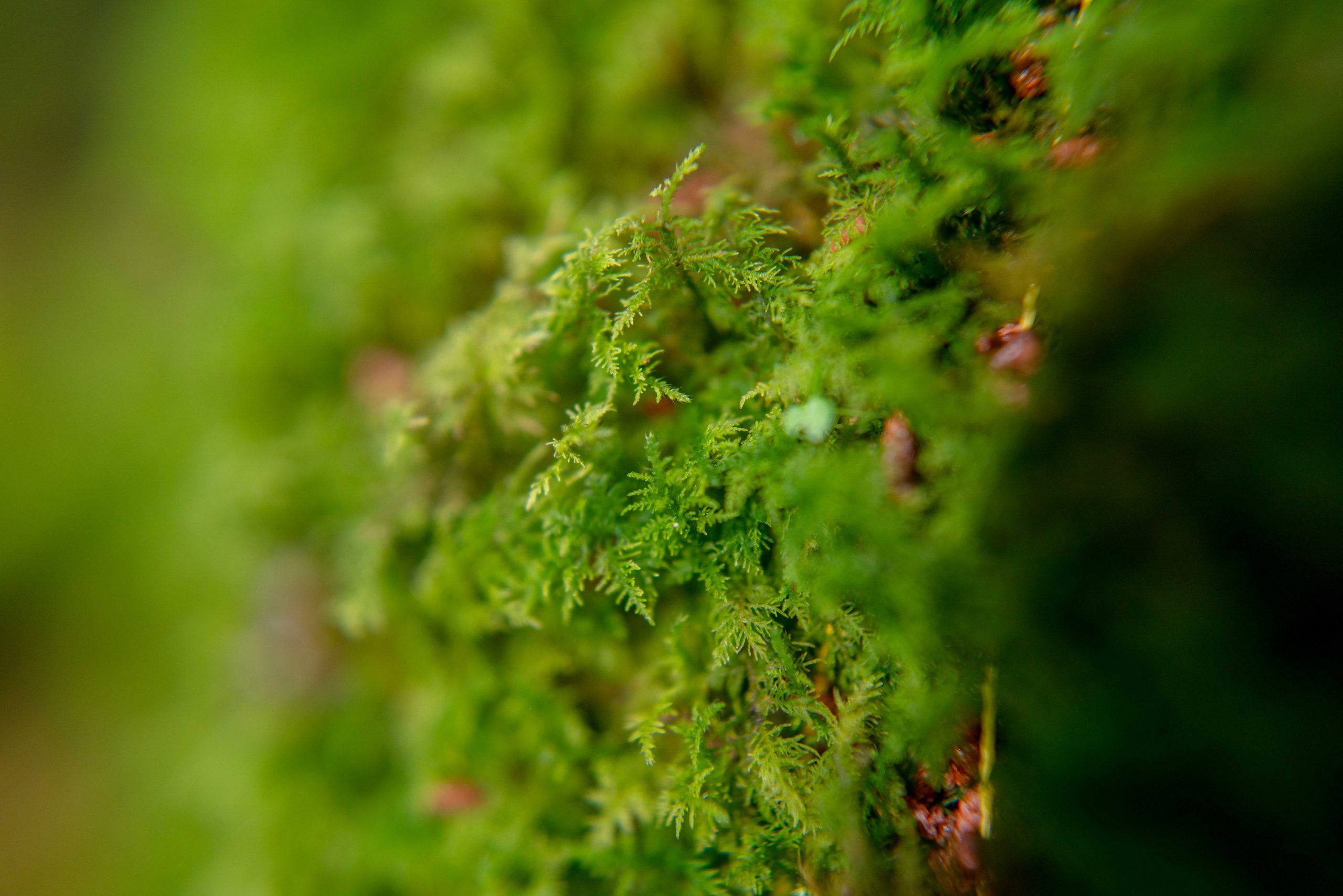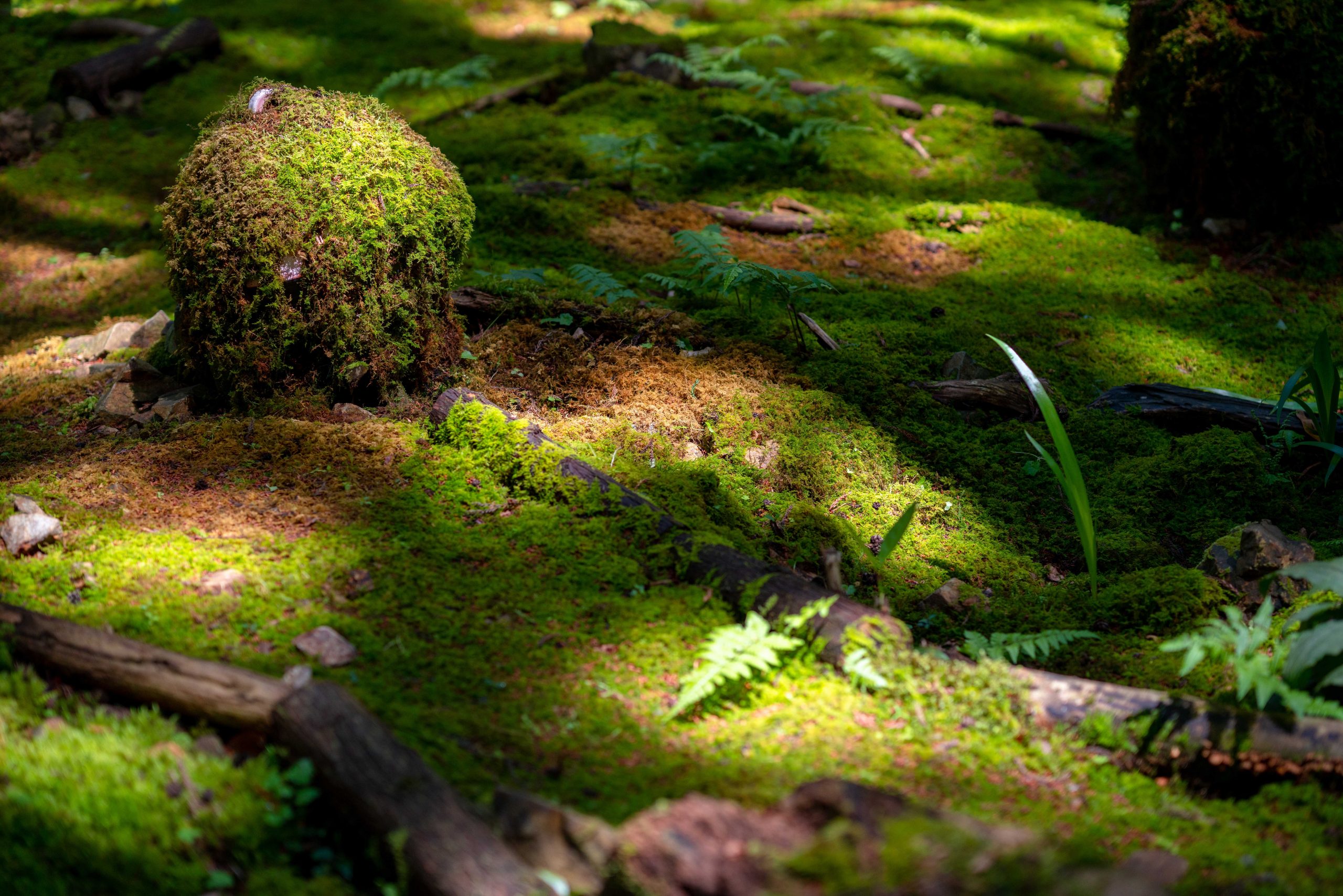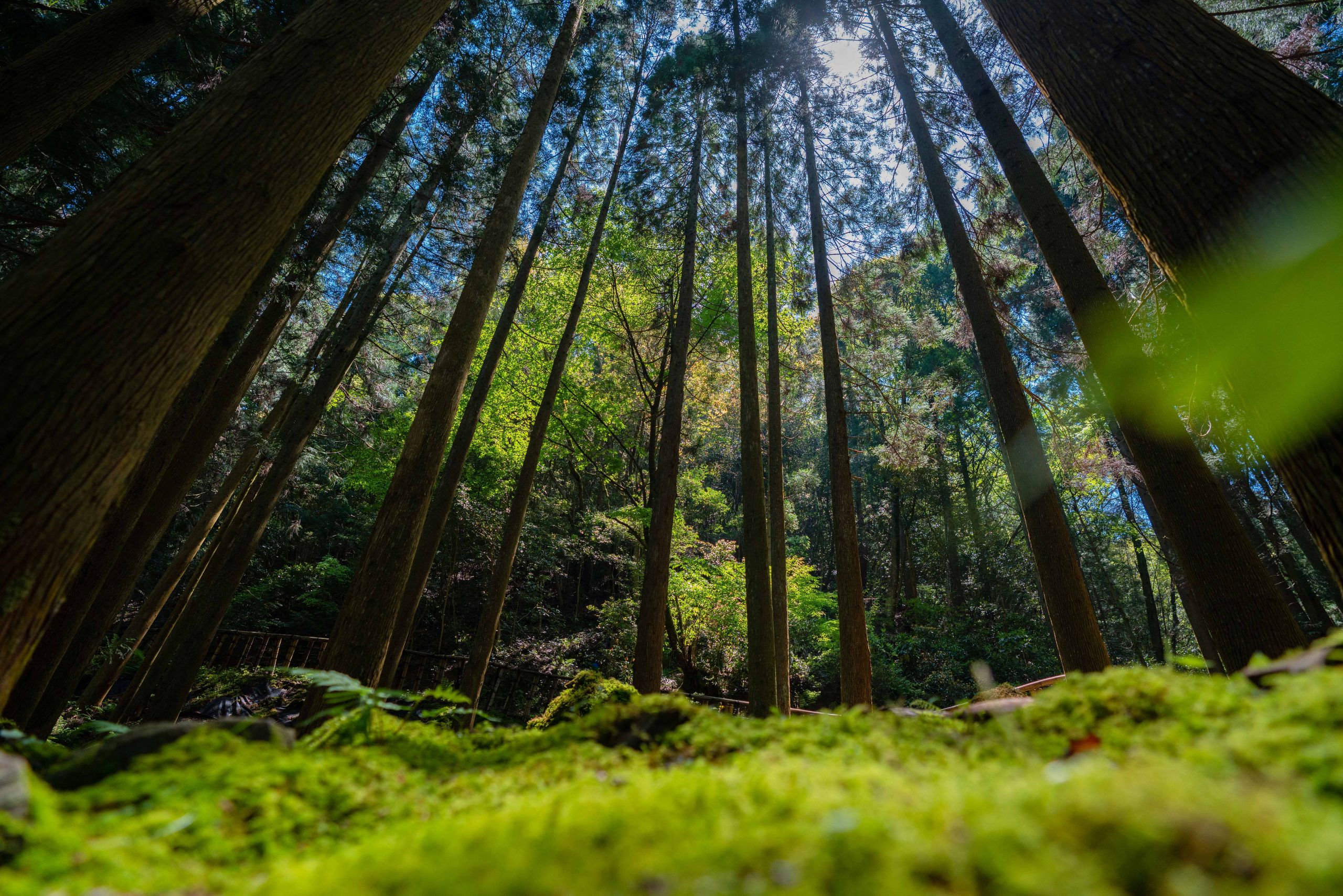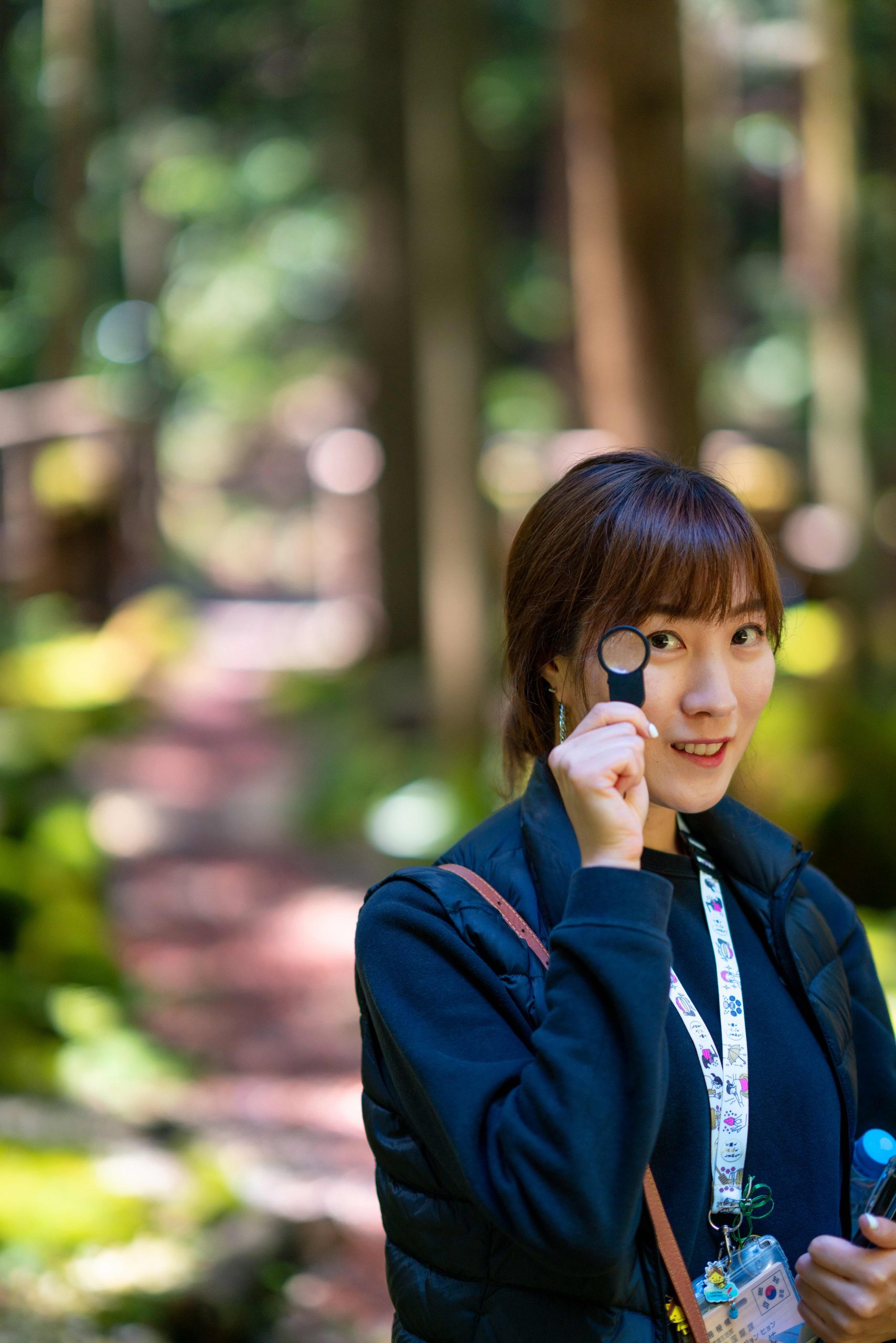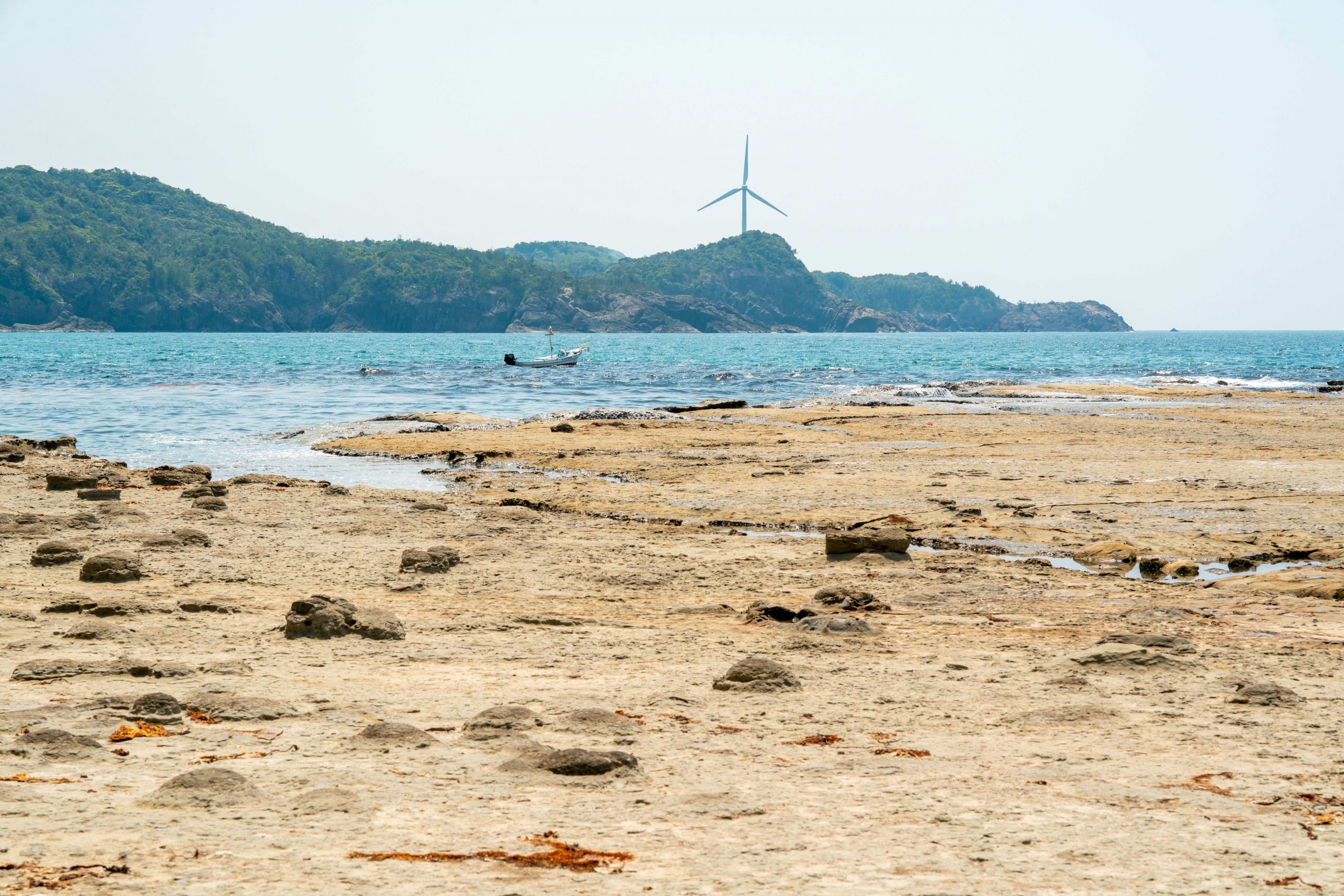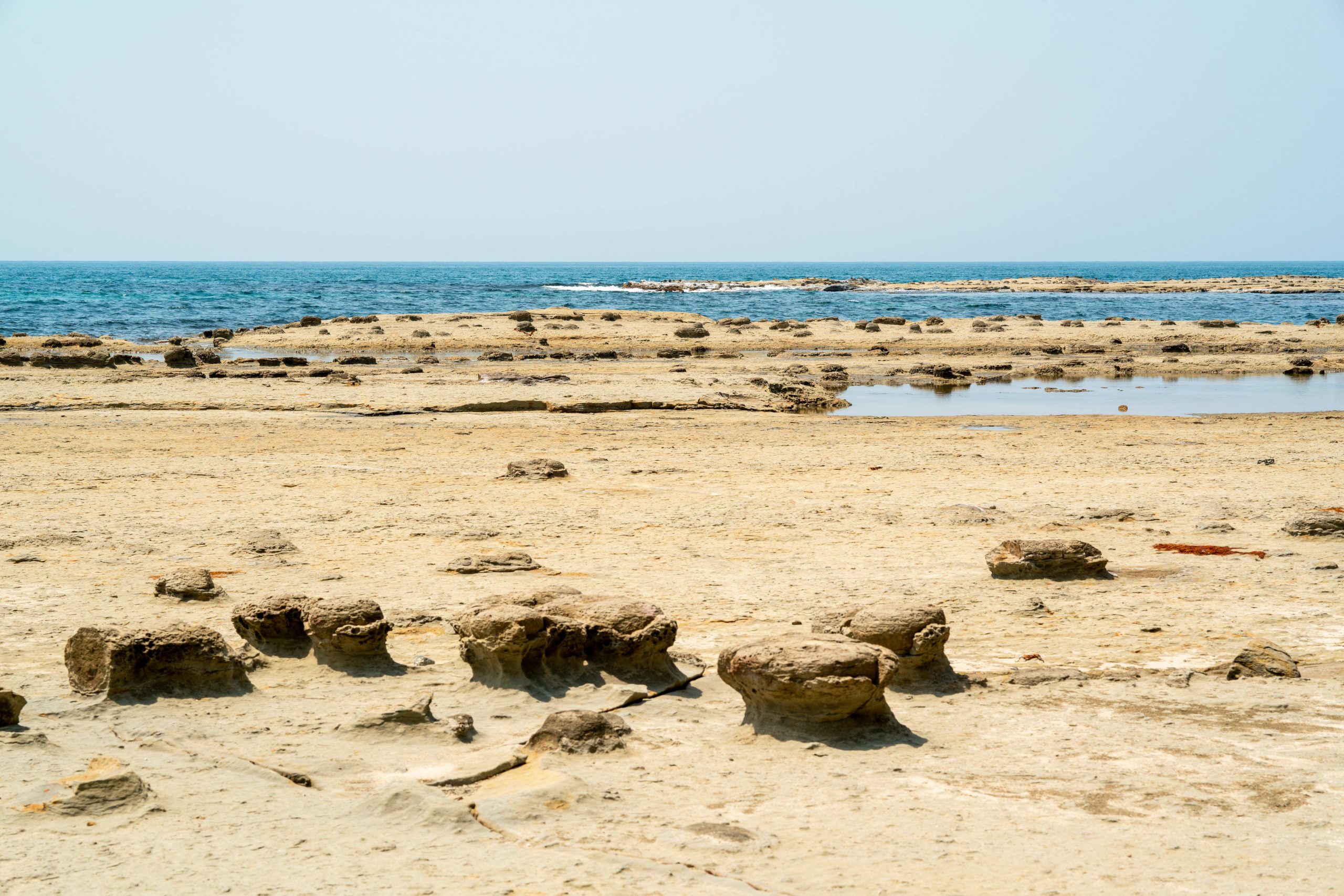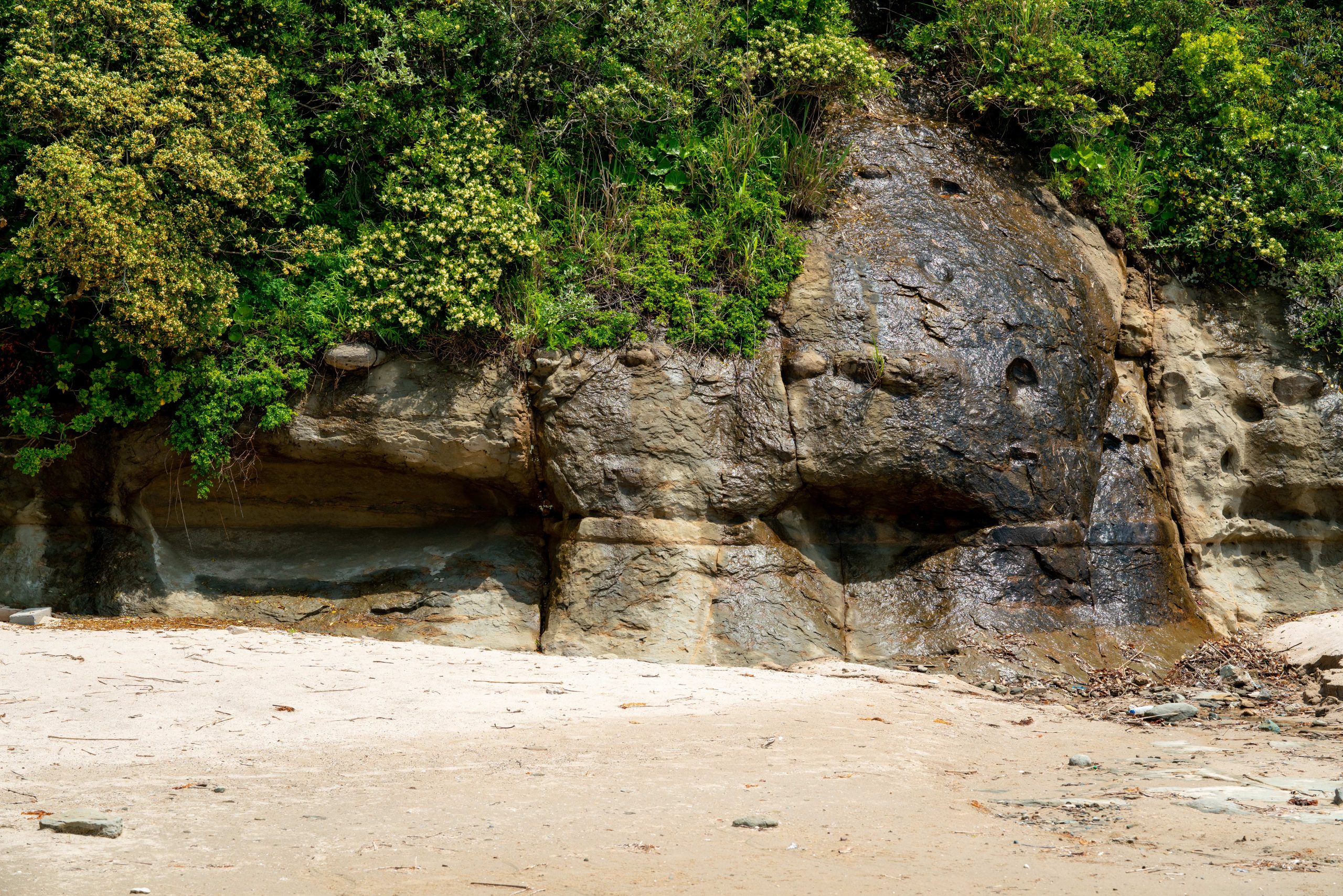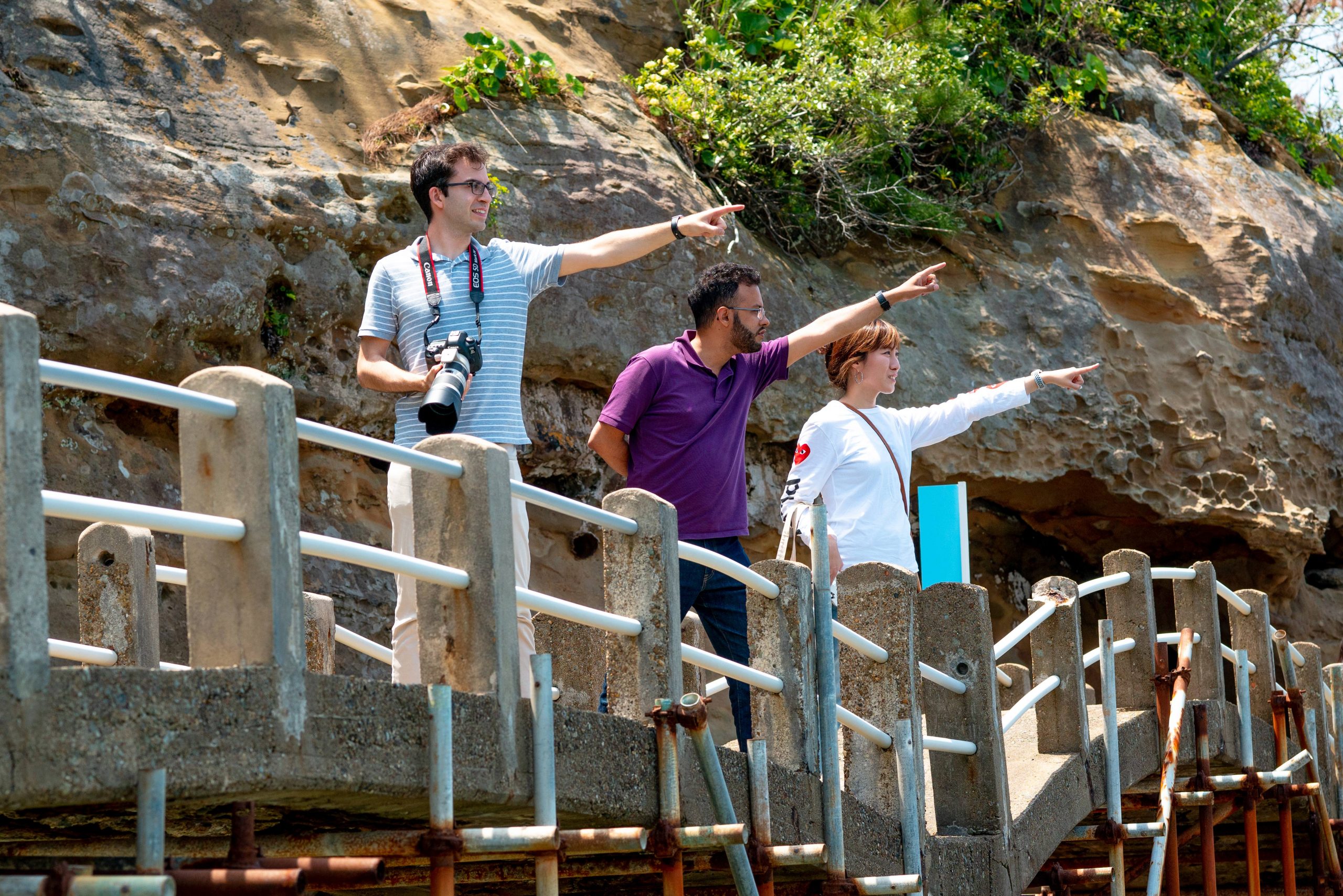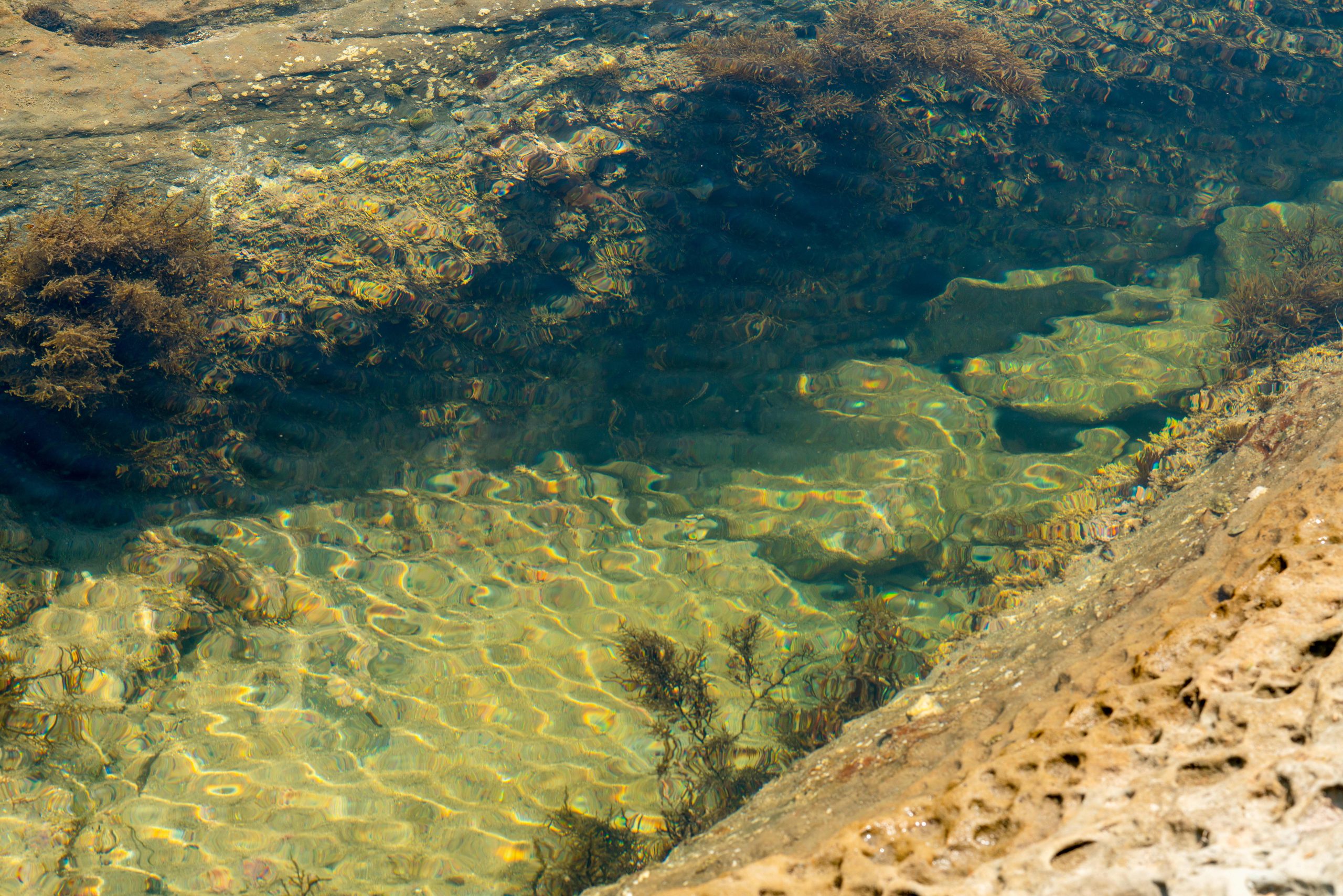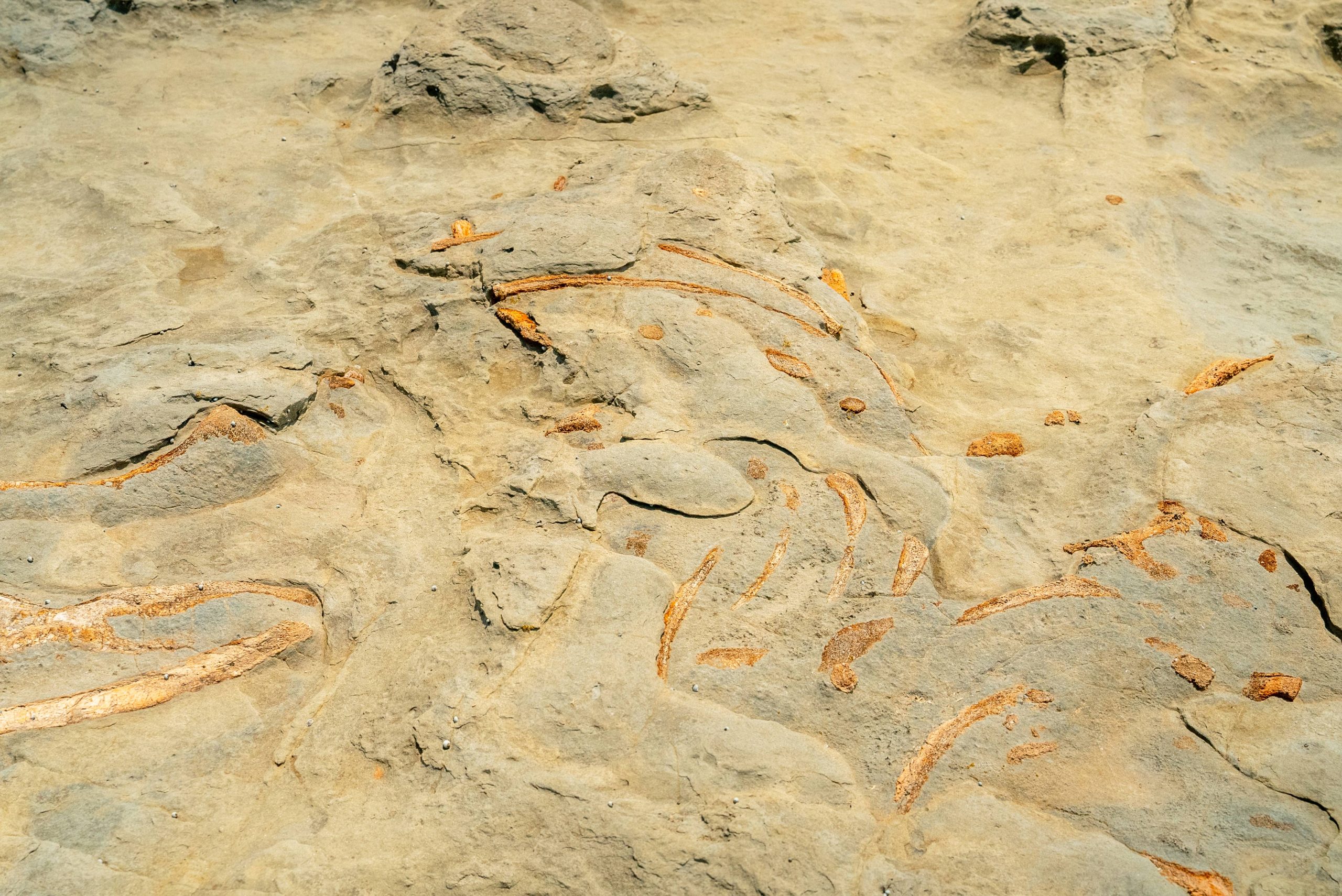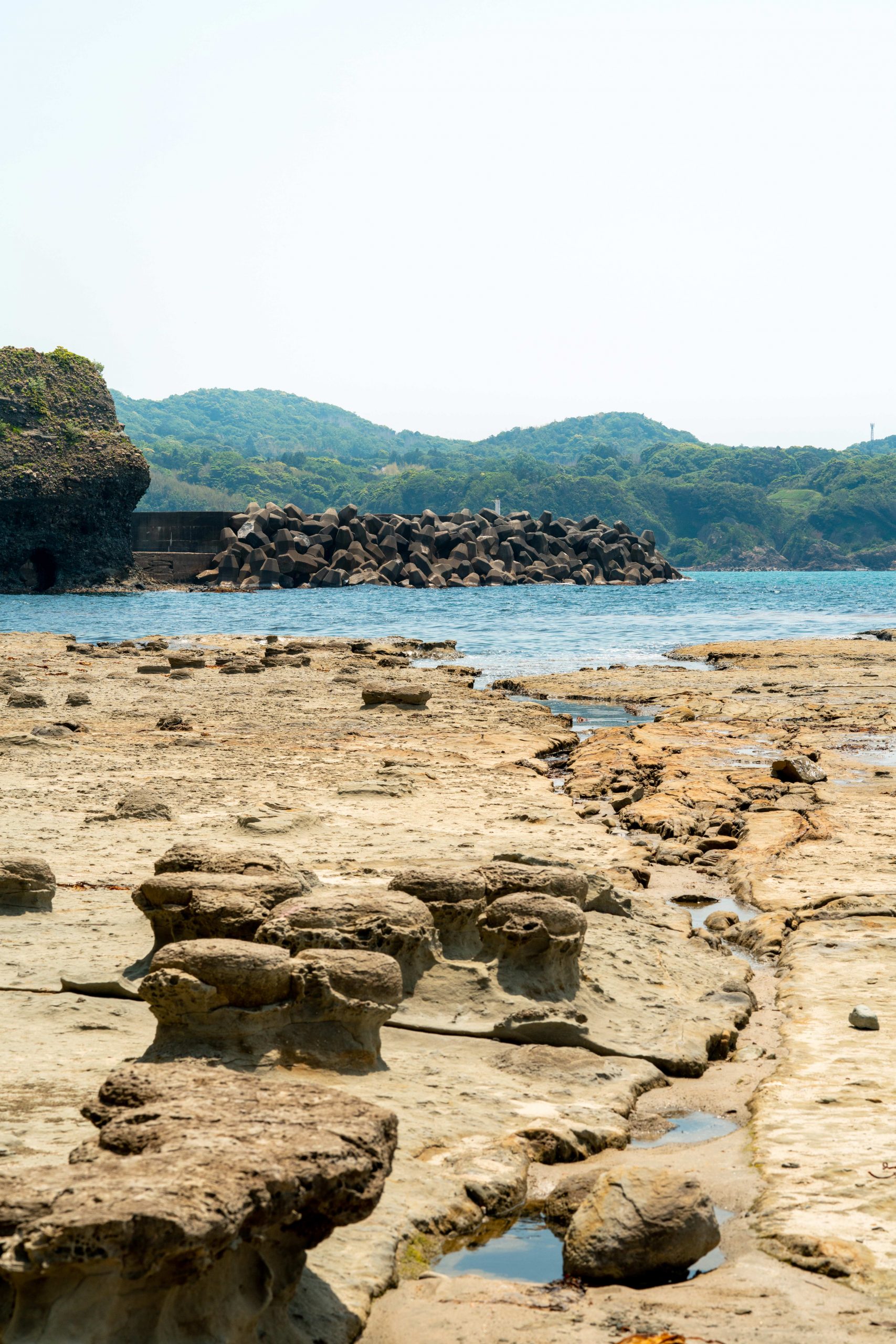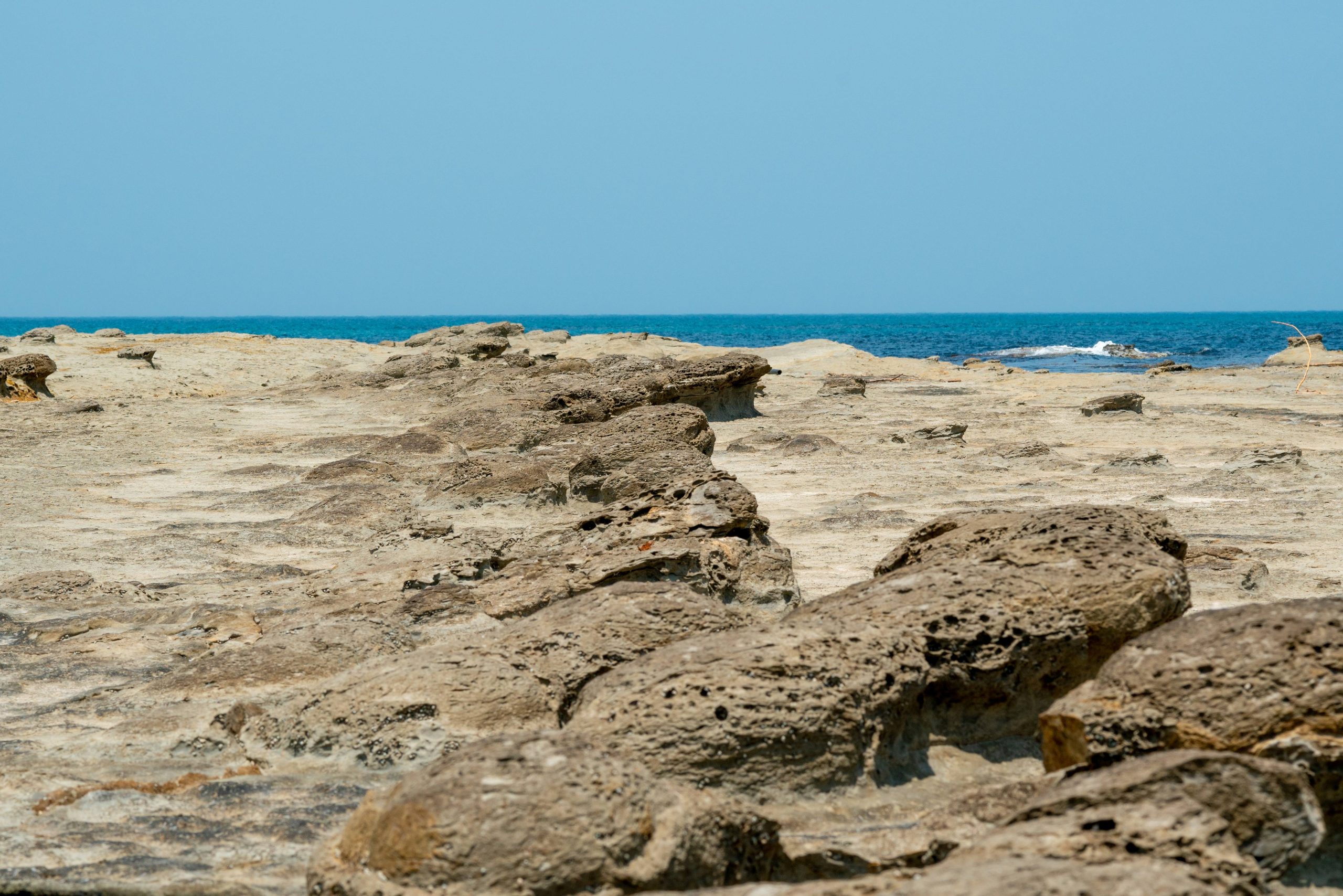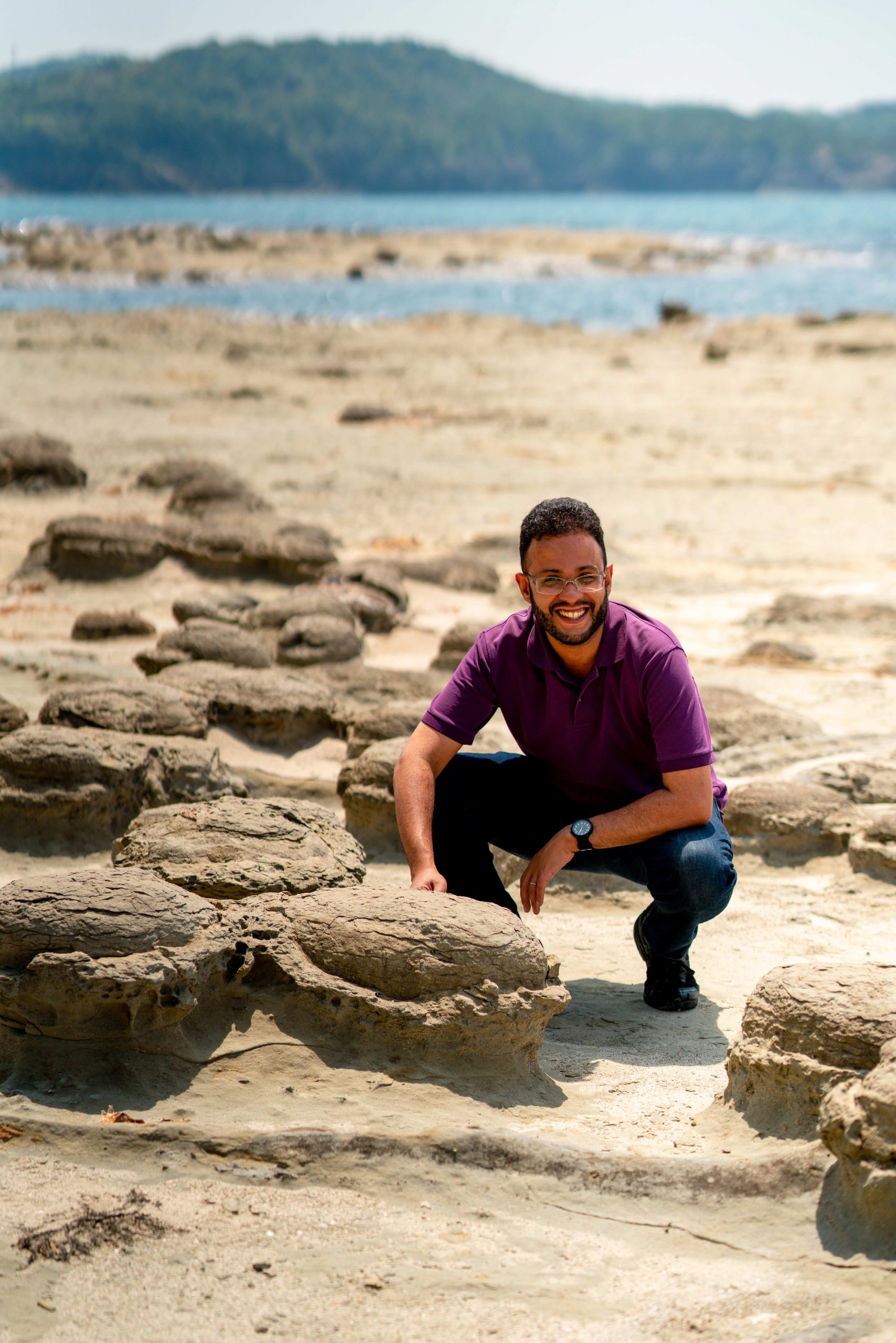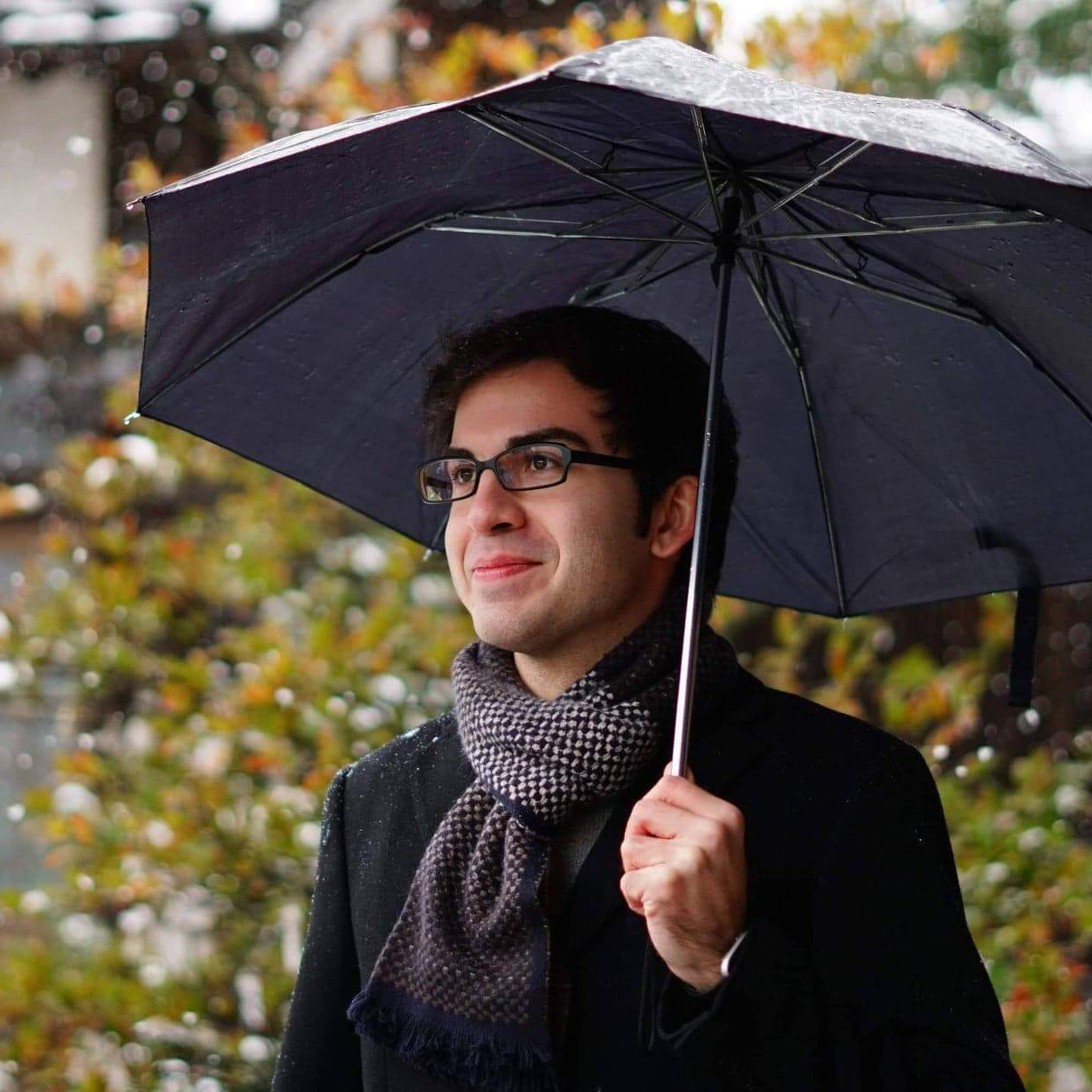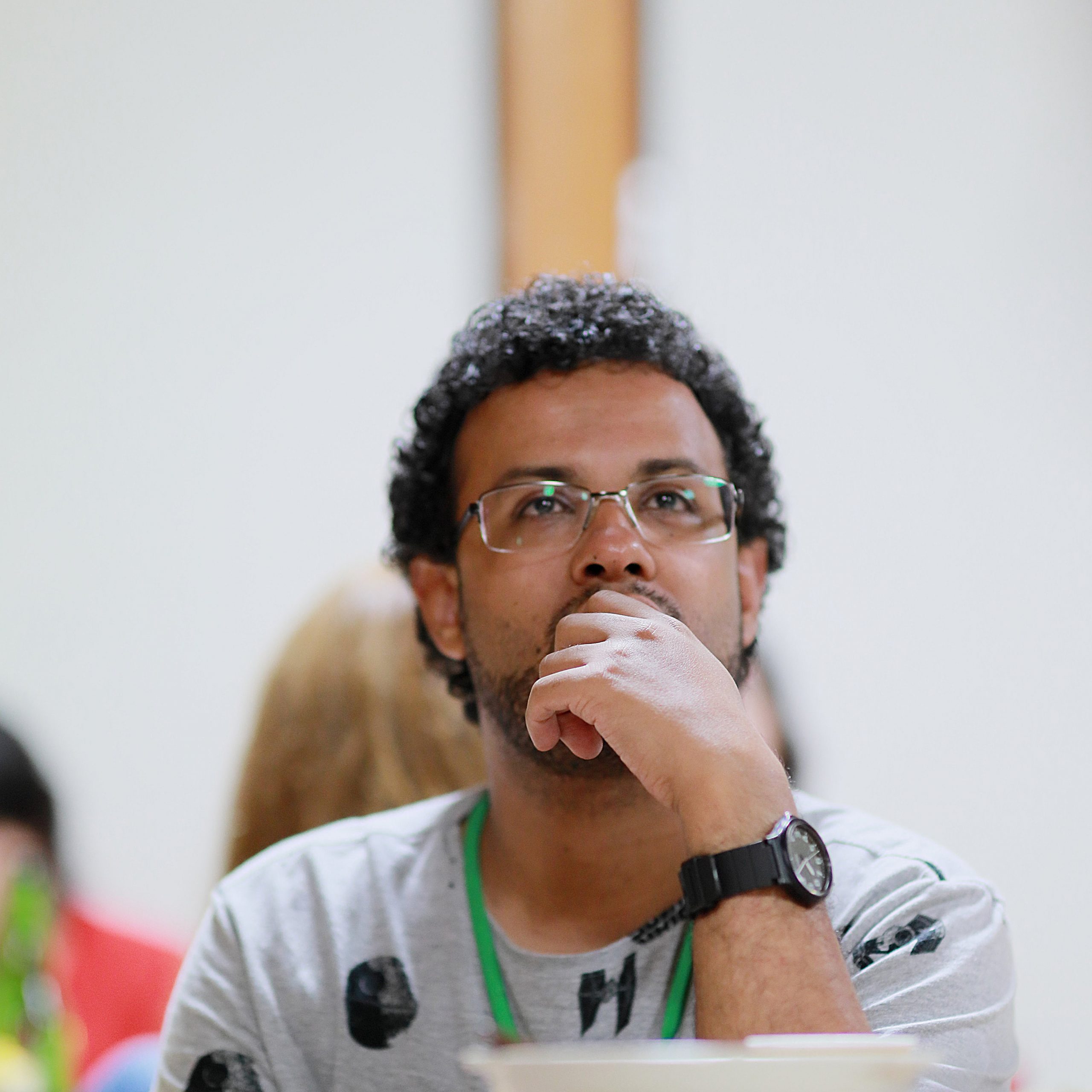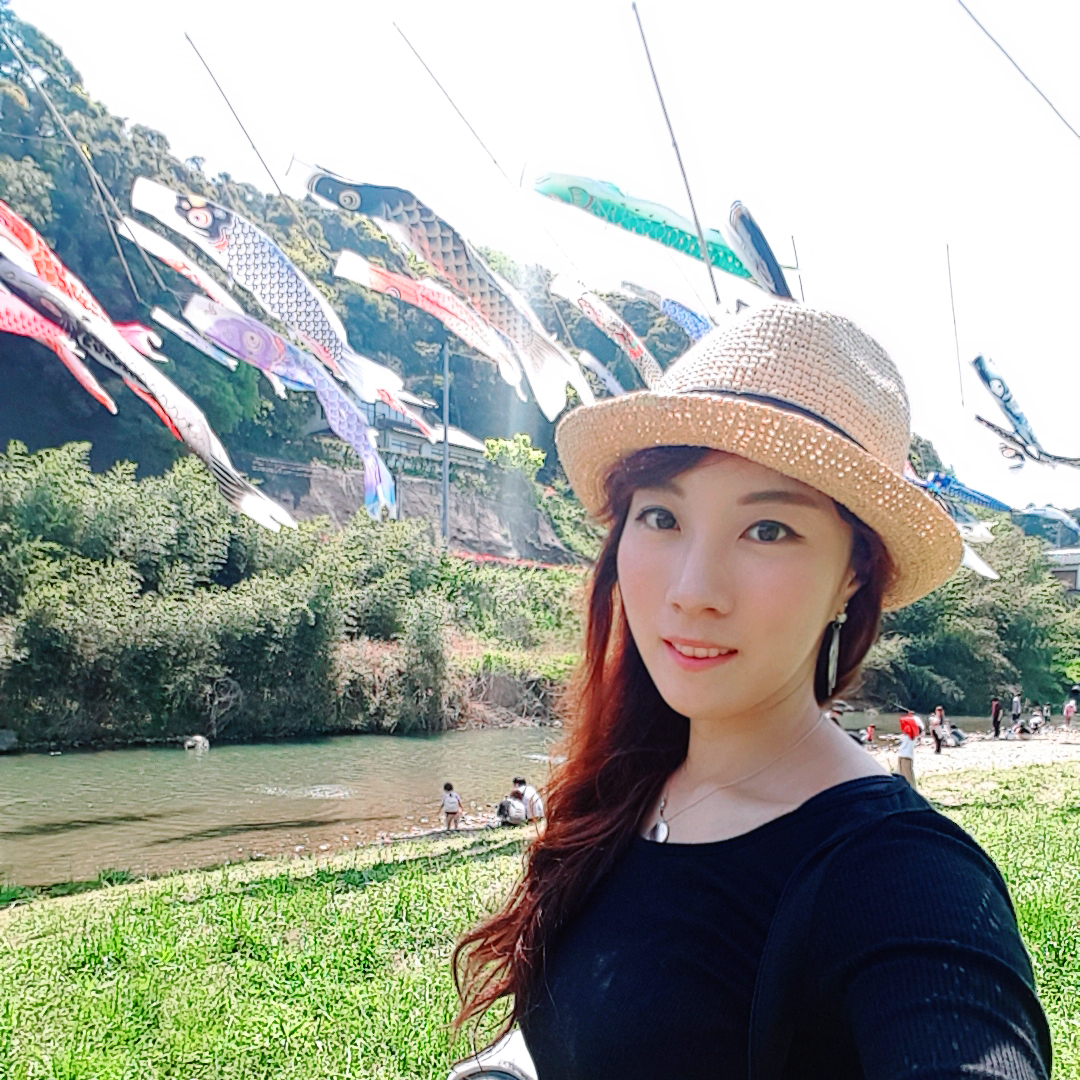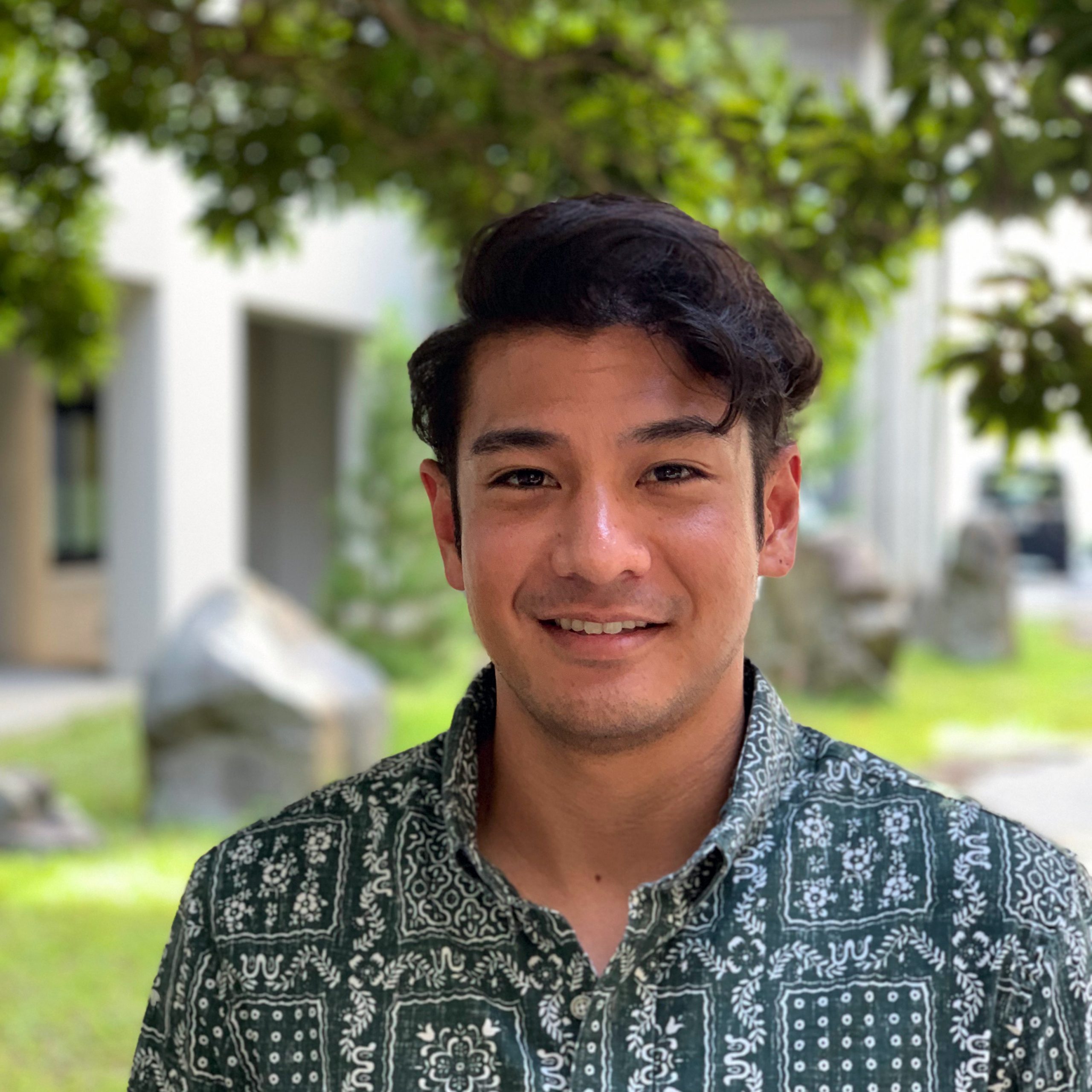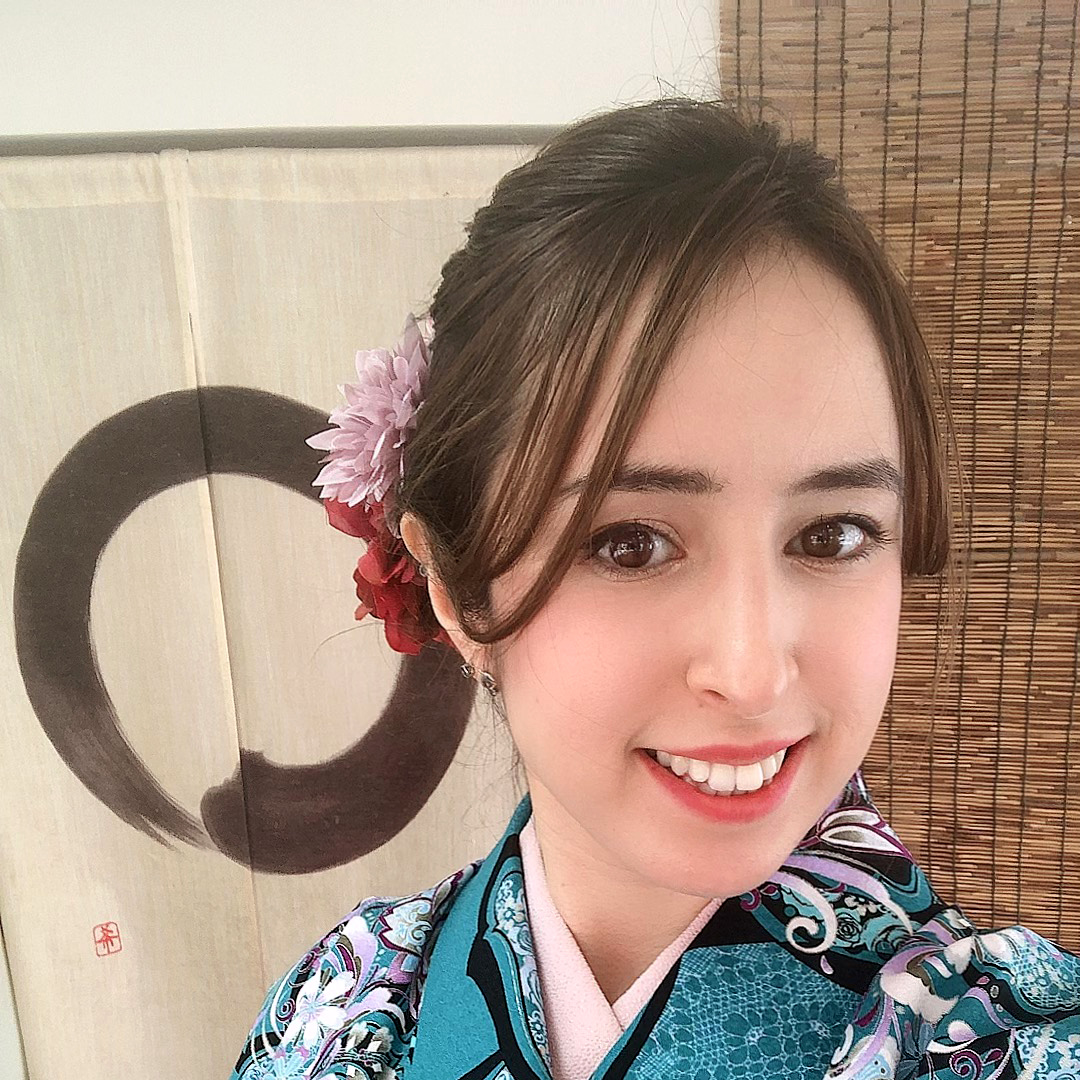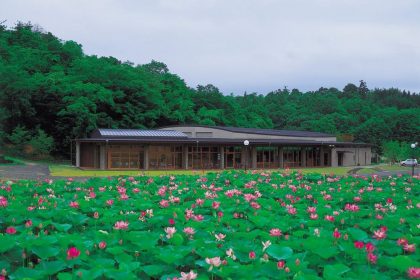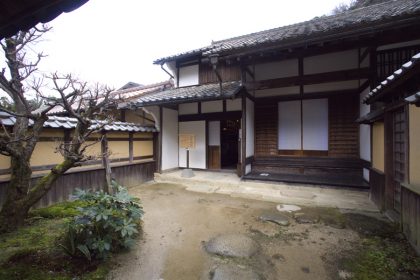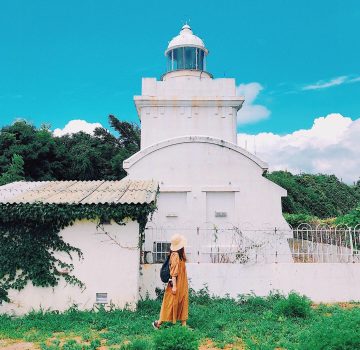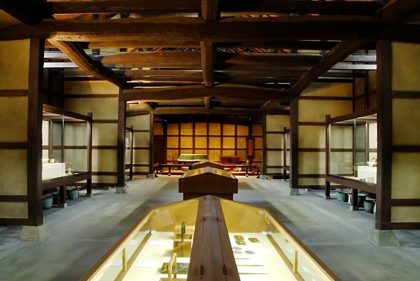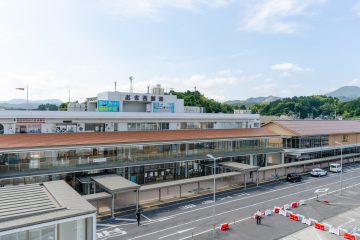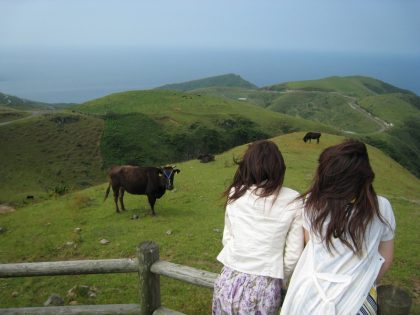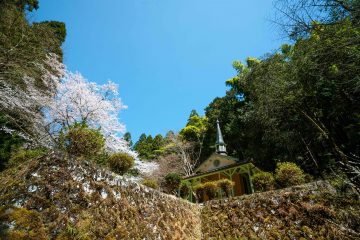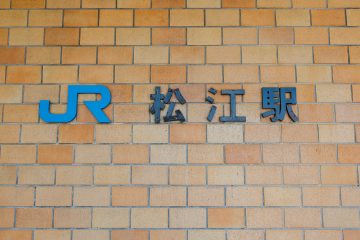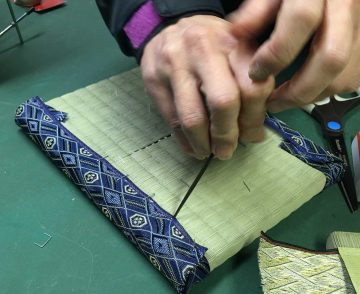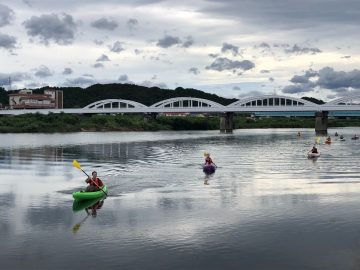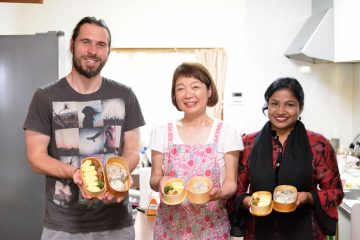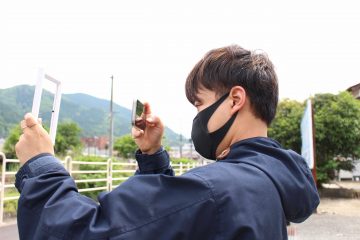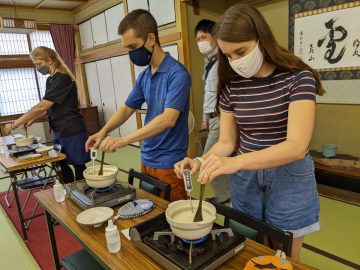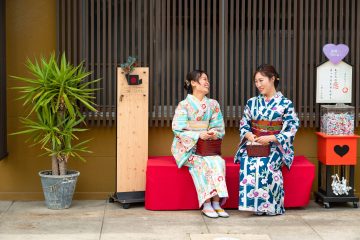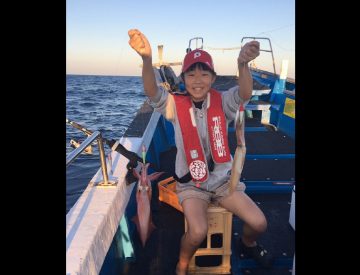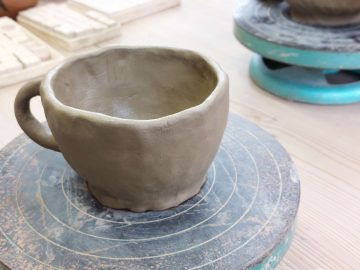Walking with Guides “The Shimanean Vol.84”
Twice a year, spring/summer and autumn/winter, CIRs (Coordinators for International Relations) visit places throughout Shimane and write about their experiences in their bi-annual magazine Shimanean. The CIRs represent their different countries and through their articles offer their own perspective to unfamiliar cultural experiences.
This time the CIRs learn about some of the locally made sweets and the connections with the locals.
Also, check out the youtube video at the bottom!
Living History! A Samurai’s View of Matsue
Since coming to Matsue City, six years have flown by- I graduated from university in Canada, and promptly flew across the ocean, having the good fortune to call this city my home in Japan. When I arrived, my first impression was one of amazement that I would be living so close to an original Japanese castle! In the first few weeks here, I would often become lost, and yet I could always get my bearing by looking for the castle. In a way, Matsue Castle supported my life in Japan.
Because I live so close to the castle, I have climbed the keep, walked through the nearby historic streets, and ridden on the sightseeing boats that cruise around the castle moat many times over the years. And yet, as time has passed, I have become used to the intricate network of moats and bridges, the winding streets, the magnificent temples- in other words, I feel like I have taken for granted the unique experience of living in a castle town. Especially nowadays, as social media becomes ever more pervasive in our lives, visitors to a place such as Matsue, brimming with history, may simply focus on taking pretty photographs that will garner the most “likes”; while this is understandable for sharing experiences with friends of for tourism promotion, my experience in this issue of The Shimanean made me realize how much more enriching it can feel to learn about the history of an area, rather than simply using it as a background for a photo or video.
To “rediscover” the Matsue that I had known for many years, my colleagues and I participated in a walking tour hosted by “Matsue Period Guides,” part of the Matsue Tourism Association. And these guides are none other than… samurai! Although I had seen people dressed in samurai armor walking around the castle grounds before, it was my first time to talk with them and learn about the Matsue of four centuries ago.
Covered in intricate armor from head to toe, we were guided by “Ishigaki Sarunosuke” and “Kusunoki Umanosuke”- the two are chief retainers loyal to Horio Yoshiharu, the feudal lord who established the castle town. Holding a matchlock rifle in one hand and an old map of Matsue in the other, Sarunosuke-san welcomed us in a deep and booming voice. Umanosuke-san, wearing a helmet adorned with a long fluffy ornamental headpiece, carried a sketchbook with various illustrations about the castle and surrounding neighbourhoods. While speaking in old, Edo-period Japanese, and telling jokes as if they were a comedy duo, the friendly pair of samurai guided us around sites where you can still glimpse urban planning from four hundred years ago.
Since the very beginning, Matsue was designed with various features to defend against enemy attack. Sarunosuke-san and Umanosuke-san explained that this defensive urban planning was known as “machiwari” (“dividing the town”). The vestiges of this planning can still be seen today. To better understand Matsue’s “machiwari” design, this walking tour was not a passive experience- in fact, it was a special course where participants play as “imaginary Mori troops” from the Mori domain to the west of Matsue, in order to experience what it would be like to invade the city and attack the castle. Departing from the bronze stature of Horio Yoshiharu near the entrance to the Matsue Castle grounds, our tour route took us along the castle moat, proceeding northeast toward Senju-in Temple; from there, we walked down winding back streets leading toward Shiominawate Street, located just to the North of the castle, where you can still see a traditional samurai residence. This tour made me realize just how difficult it would have been to attack Matsue in the past.
Near the castle, there are irregular intersections where the roads do not line up perfectly. These intersections, called “kagigataro” (“key-shaped roads”) are part of the “machiwari” urban planning, and were designed to prevent enemy troops from easily marching in a straight line toward the castle. In addition, there is a wide, flat neighbourhood in the centre of Matsue called Teramachi (“Temple town”), aptly named for the 25 temples that are gathered there. By deliberately building all the temples in one large area, it would attract enemy troops to use the open area as a convenient gathering ground, where those protecting the castle town would be waiting to ambush them. Matsue was truly a fortress utilizing the latest military technology and defensive planning a the time- even down to the placement of its temples. By just looking at the city, I would never have guessed that everything was secretly designed with this “machiwari” design in mind.
By learning history with Sarunosuke-san and Umanosuke-san, who made a great effort to provide an extremely fun tour despite the searing summer heat, I can see why the “Matsue Period Guide” website lists their motto as being the “friendliest castle guides in the world”. I am confident that participants on the many tours offered- whether first-time tourists or long-time residents- will be able to see the centuries-old city of Matsue with a new perspective. And who knows- you may just make friends with a samurai!
(written by: Oliver Marshall)
Because I live so close to the castle, I have climbed the keep, walked through the nearby historic streets, and ridden on the sightseeing boats that cruise around the castle moat many times over the years. And yet, as time has passed, I have become used to the intricate network of moats and bridges, the winding streets, the magnificent temples- in other words, I feel like I have taken for granted the unique experience of living in a castle town. Especially nowadays, as social media becomes ever more pervasive in our lives, visitors to a place such as Matsue, brimming with history, may simply focus on taking pretty photographs that will garner the most “likes”; while this is understandable for sharing experiences with friends of for tourism promotion, my experience in this issue of The Shimanean made me realize how much more enriching it can feel to learn about the history of an area, rather than simply using it as a background for a photo or video.
To “rediscover” the Matsue that I had known for many years, my colleagues and I participated in a walking tour hosted by “Matsue Period Guides,” part of the Matsue Tourism Association. And these guides are none other than… samurai! Although I had seen people dressed in samurai armor walking around the castle grounds before, it was my first time to talk with them and learn about the Matsue of four centuries ago.
Covered in intricate armor from head to toe, we were guided by “Ishigaki Sarunosuke” and “Kusunoki Umanosuke”- the two are chief retainers loyal to Horio Yoshiharu, the feudal lord who established the castle town. Holding a matchlock rifle in one hand and an old map of Matsue in the other, Sarunosuke-san welcomed us in a deep and booming voice. Umanosuke-san, wearing a helmet adorned with a long fluffy ornamental headpiece, carried a sketchbook with various illustrations about the castle and surrounding neighbourhoods. While speaking in old, Edo-period Japanese, and telling jokes as if they were a comedy duo, the friendly pair of samurai guided us around sites where you can still glimpse urban planning from four hundred years ago.
Since the very beginning, Matsue was designed with various features to defend against enemy attack. Sarunosuke-san and Umanosuke-san explained that this defensive urban planning was known as “machiwari” (“dividing the town”). The vestiges of this planning can still be seen today. To better understand Matsue’s “machiwari” design, this walking tour was not a passive experience- in fact, it was a special course where participants play as “imaginary Mori troops” from the Mori domain to the west of Matsue, in order to experience what it would be like to invade the city and attack the castle. Departing from the bronze stature of Horio Yoshiharu near the entrance to the Matsue Castle grounds, our tour route took us along the castle moat, proceeding northeast toward Senju-in Temple; from there, we walked down winding back streets leading toward Shiominawate Street, located just to the North of the castle, where you can still see a traditional samurai residence. This tour made me realize just how difficult it would have been to attack Matsue in the past.
Near the castle, there are irregular intersections where the roads do not line up perfectly. These intersections, called “kagigataro” (“key-shaped roads”) are part of the “machiwari” urban planning, and were designed to prevent enemy troops from easily marching in a straight line toward the castle. In addition, there is a wide, flat neighbourhood in the centre of Matsue called Teramachi (“Temple town”), aptly named for the 25 temples that are gathered there. By deliberately building all the temples in one large area, it would attract enemy troops to use the open area as a convenient gathering ground, where those protecting the castle town would be waiting to ambush them. Matsue was truly a fortress utilizing the latest military technology and defensive planning a the time- even down to the placement of its temples. By just looking at the city, I would never have guessed that everything was secretly designed with this “machiwari” design in mind.
By learning history with Sarunosuke-san and Umanosuke-san, who made a great effort to provide an extremely fun tour despite the searing summer heat, I can see why the “Matsue Period Guide” website lists their motto as being the “friendliest castle guides in the world”. I am confident that participants on the many tours offered- whether first-time tourists or long-time residents- will be able to see the centuries-old city of Matsue with a new perspective. And who knows- you may just make friends with a samurai!
(written by: Oliver Marshall)
A Walk Through the Forest with a Guide ~Arifuku Moss Land~
Gotsu City is the smallest and least populated area in ShimanePrefecture. The Gonokawa River, which is the largest river in the Chugokuregion, flows through the town center. With 80% of the town being mountainous, there is access to only a limited amount of land for agriculture. Therefore, moss, which is abundant near the highly humid Gonokawa River basin and can be cultivated in small spaces, is utilized as a local resource by companies and growers in collaboration with Gotsu City. Since 2015, they have been developing a project to revitalize the region as a model of the sixth sector with the vision of “enriching the world with the Moss of Gotsu.”
We visited a place called Arifuku Moss Land, run by the couple Masaki Kawamura and his wife, who both live in Gotsu City.
First, we drove to the Arifuku Onsen area. Although small, it is a famous hot spring area with a history of over 1,370 years. Natural hot spring water springs from 13 different locations with three hot spring facilities available for public use. There are also beautiful ryokans, fashionable restaurants, and wine bars. With the beautiful weather, we opted to walk a kilometer along the mountain road to Arifuku Moss Land, even though we could have taken the car there. We enjoyed the scenery deep in the mountains, taking time to look at rice fields and wildflowers as we walked by. Frogs croaked loudly as we passed, giving us a raw experience in nature. While we walked, enjoying the scenery, we came across a creek and the place Moss Land, which looked like a forest right out of a Ghibli anime.
Six years ago, the couple began growing moss on their own while studying moss cultivation for a year under the Shimane Settlement Foundation's program. Moss is a rootless plant (some species have pseudo roots that are similar to roots and grow underground) that is affected by moisture in the air, which means there is no guarantee that it will grow well anywhere. However, after six years, the garden is now full of beautiful moss. And Arifuku Moss Land, which the couple spent several years building together in an empty space on the mountain, is now an emerald moss forest.
We enjoyed a cup of tea and lost track of time as we relaxed in the green nature of Arifuku Moss Land. Here, visitors are able to relax in nature while also engaging in hands-on activities. Visitors can borrow a magnifying glass and look for more than 14 species of moss using a piece of paper with pictures of the different types of mosses supplied by Mr . Kawamura. You can also make small terrariums of moss and other materials, and use them as decoration for your home interior. Moss Land is also decorated with objects as part of the “Connecting the Sea and Forest” project that uses driftwood and other objects that have washed ashore in Gotsu City.
Kawamura also runs a store called Naminoko Zakkaten, where he sells his moss along with other items. The moss sold at Naminoko Zakkaten mainly consists of the haigoke (Hypnum plumaeforme) and the yamagoke (Leucobryum bowringii) varieties. These two kinds of moss are
mainly bought by gardeners who use them in Japanese gardens.
A survey on the use of moss reveals that it is mainly used for decorating flowerpots and for landscaping purposes, but in Korea, it is primarily used as a packaging material for ginseng. In addition to its eco-friendliness, which has been recently highlighted, moss is spread like mats on rooftops and walls of buildings and riverbank revetment surfaces, where it
is used for creating green spaces in cities. I realized what I thought was just ordinary grass is actually not ordinary grass, but moss. I thought of moss as something that grew naturally in nature, but after this interview, I found out it is also grown artificially. Since I would commonly see them in damp and dark places, I thought they were similar to fungi and did not ever think about
stepping or touching them. Thanks to this visit, I was able to see various species of moss with my own eyes and change my misconceptions about them.
Moss is not limited to only landscaping purposes, it is also used in medicines for its antibacterial properties, while fragrant moss is used as a raw material for perfumes. Moss is being used more than ever because it is resistant to climate change, grows without soil, and is light in weight. With environmental issues becoming bigger topics these days, the interest in moss cultivation in many countries is increasing. I think this was a good opportunity to think about moss cultivation and the possibilities of moss. I want to continue watching the moss project in Gotsu and visit other moss utilization projects in different countries.
Visitors of Moss Land are encouraged to enjoy their time resting in nature through trekking, hot springs, and moss activities in the Arifuku Onsen area. Please visit the Naminoko Zakkaten store, near Iwami Seaside Park, where you can enjoy some tea and find moss-related products.
(written by: Jung-hyun Lee)
We visited a place called Arifuku Moss Land, run by the couple Masaki Kawamura and his wife, who both live in Gotsu City.
First, we drove to the Arifuku Onsen area. Although small, it is a famous hot spring area with a history of over 1,370 years. Natural hot spring water springs from 13 different locations with three hot spring facilities available for public use. There are also beautiful ryokans, fashionable restaurants, and wine bars. With the beautiful weather, we opted to walk a kilometer along the mountain road to Arifuku Moss Land, even though we could have taken the car there. We enjoyed the scenery deep in the mountains, taking time to look at rice fields and wildflowers as we walked by. Frogs croaked loudly as we passed, giving us a raw experience in nature. While we walked, enjoying the scenery, we came across a creek and the place Moss Land, which looked like a forest right out of a Ghibli anime.
Six years ago, the couple began growing moss on their own while studying moss cultivation for a year under the Shimane Settlement Foundation's program. Moss is a rootless plant (some species have pseudo roots that are similar to roots and grow underground) that is affected by moisture in the air, which means there is no guarantee that it will grow well anywhere. However, after six years, the garden is now full of beautiful moss. And Arifuku Moss Land, which the couple spent several years building together in an empty space on the mountain, is now an emerald moss forest.
We enjoyed a cup of tea and lost track of time as we relaxed in the green nature of Arifuku Moss Land. Here, visitors are able to relax in nature while also engaging in hands-on activities. Visitors can borrow a magnifying glass and look for more than 14 species of moss using a piece of paper with pictures of the different types of mosses supplied by Mr . Kawamura. You can also make small terrariums of moss and other materials, and use them as decoration for your home interior. Moss Land is also decorated with objects as part of the “Connecting the Sea and Forest” project that uses driftwood and other objects that have washed ashore in Gotsu City.
Kawamura also runs a store called Naminoko Zakkaten, where he sells his moss along with other items. The moss sold at Naminoko Zakkaten mainly consists of the haigoke (Hypnum plumaeforme) and the yamagoke (Leucobryum bowringii) varieties. These two kinds of moss are
mainly bought by gardeners who use them in Japanese gardens.
A survey on the use of moss reveals that it is mainly used for decorating flowerpots and for landscaping purposes, but in Korea, it is primarily used as a packaging material for ginseng. In addition to its eco-friendliness, which has been recently highlighted, moss is spread like mats on rooftops and walls of buildings and riverbank revetment surfaces, where it
is used for creating green spaces in cities. I realized what I thought was just ordinary grass is actually not ordinary grass, but moss. I thought of moss as something that grew naturally in nature, but after this interview, I found out it is also grown artificially. Since I would commonly see them in damp and dark places, I thought they were similar to fungi and did not ever think about
stepping or touching them. Thanks to this visit, I was able to see various species of moss with my own eyes and change my misconceptions about them.
Moss is not limited to only landscaping purposes, it is also used in medicines for its antibacterial properties, while fragrant moss is used as a raw material for perfumes. Moss is being used more than ever because it is resistant to climate change, grows without soil, and is light in weight. With environmental issues becoming bigger topics these days, the interest in moss cultivation in many countries is increasing. I think this was a good opportunity to think about moss cultivation and the possibilities of moss. I want to continue watching the moss project in Gotsu and visit other moss utilization projects in different countries.
Visitors of Moss Land are encouraged to enjoy their time resting in nature through trekking, hot springs, and moss activities in the Arifuku Onsen area. Please visit the Naminoko Zakkaten store, near Iwami Seaside Park, where you can enjoy some tea and find moss-related products.
(written by: Jung-hyun Lee)
A Tatami Mat of Fossils at “Iwami Tatamigaura”
For this issue of the Shimanean, one of our destinations was Iwami Tatamigaura̶a place that one could say is a “ geology museum created by nature.” Tatamigaura is located on the coast of Hamada City in western Shimane Prefecture. Guiding us through Tatamigaura was Mr. Hiromi Ushio, a Hamada City tourism volunteer guide.
The entrance to Tatamigaura is a sea cave, and a 25-meter-high cliff towers over the cave opening. You can see countless rocks dotting the cliff face, which have been eroded by the waves. In particular, my eyes were drawn to a large hollow indent that appears to have once contained a large boulder. According to Mr. Ushio, for many years the indent contained a rock aptly known as “the rock that never seems to fall.” Around exam season, students would visit the cliff and pray to the rock in order to pass their exams; however, the rock finally fell a few years ago, with locals saying that “the rock deliberately ‘fell’ instead of the student’s grades falling.”
We made our way through the opening in the cliff and finally entered Tatamigaura. We first walked through a short tunnel and arrived inside Sainokawara Doukutsu Cave. From inside the cave, we could see a beautiful view of the sea, as well as a small, charming island known as “Cat Island.” Although not visible from inside the cave, there is another nearby island known as “Dog Island.” Mr. Ushio explained to us the origin of the island names. According to legend, in the Nara period this area used to be the site of Iwamikokubun-ji Temple, which had an extremely gorgeous roof; the Tang dynasty in modern-day China̶fearing that they would be outshone̶sought to destroy the temple roof by sending in a “red cat” (which is also an old expression meaning to start a fire). However, a faithful Japanese dog appeared and chased away the red cat, and thus “Cat Island” and “Dog Island” were born.
Proceeding through the cave, we entered another tunnel̶this time longer̶which had explanations of the history and geological features of Tatamigaura on the walls. Exiting this tunnel, we finally arrived at our destination. Tatamigaura is a vast, flat rocky beach known as an “abrasion
platform,” stretching over an area of approximately 49,000 m2̶about one third of Brazil’s largest soccer stadium, the Maracanã Stadium (or about the same area as Tokyo Dome). Also called Senjoujiki (lit. “covering of one thousand tatami [bamboo] mats”), Tatamigaura (lit. “tatami seashore”) gets its name from the straight ridge lines that crisscross the g round. To Japanese people, this orderly pattern of straight, rectangular ridge lines was reminiscent of a room covered in tatami mats.
Walking along the “one thousand tatami mats” of Tatamigaura, there are many interesting spectacles. One such spectacle is the many “nodules”̶concretions of rock formed by the effects of calcium carbonate originating in seashells. These nodules are the perfect height to be used as a bench while taking a break, or as a spot for taking photographs. In addition, the rocks contain fossilized driftwood in which there are many shipworm nesting holes. You can even find the fossilized jawbone of a whale. Due to the upward movement of the earth, there is also an elevated area called “The Horse’s Back,” and from there you can see a beautiful view of the sea as well as many interestingly shaped rocks, such as one that looks like a giant iguana. I recommend visiting Tatamigaura and using your imagination to find other shapes in the rocks. Upon walking further, you can see dikes caused by magma which flowed upwards toward the surface. If you look closely at the dikes, you can see dark rock that is different from the surroundings. In the area, there are additionally small, fossilized shells that form the shape of a heart, which Mr. Ushio called “happy shells.” I imagine that it would be fun to go on a “happy shell” hunting adventure! I wonder if finding them will bring happiness?
Lastly, we arrived at Meganebashi (lit. “Glasses Bridge”). Although it was a bit precarious to follow the narrow path toward the bridge, we were able to get a stunning view of the nearby pristine sea water as well as observe a cliff face which had been sheared in two, with a height difference between the side of about three meters- the top was made of sandstone and the bottom was made of conglomerate stone. On an evening with little wind, I encourage visitors to Tatamigaura to find tide pools; by posing yourself or friends near the tide pools, you can take photographs with the subject’s silhouette being reflected in the water- a spectacular memento of a grand trek across a unique landscape.
(written by: Felipe Nascimento)
The entrance to Tatamigaura is a sea cave, and a 25-meter-high cliff towers over the cave opening. You can see countless rocks dotting the cliff face, which have been eroded by the waves. In particular, my eyes were drawn to a large hollow indent that appears to have once contained a large boulder. According to Mr. Ushio, for many years the indent contained a rock aptly known as “the rock that never seems to fall.” Around exam season, students would visit the cliff and pray to the rock in order to pass their exams; however, the rock finally fell a few years ago, with locals saying that “the rock deliberately ‘fell’ instead of the student’s grades falling.”
We made our way through the opening in the cliff and finally entered Tatamigaura. We first walked through a short tunnel and arrived inside Sainokawara Doukutsu Cave. From inside the cave, we could see a beautiful view of the sea, as well as a small, charming island known as “Cat Island.” Although not visible from inside the cave, there is another nearby island known as “Dog Island.” Mr. Ushio explained to us the origin of the island names. According to legend, in the Nara period this area used to be the site of Iwamikokubun-ji Temple, which had an extremely gorgeous roof; the Tang dynasty in modern-day China̶fearing that they would be outshone̶sought to destroy the temple roof by sending in a “red cat” (which is also an old expression meaning to start a fire). However, a faithful Japanese dog appeared and chased away the red cat, and thus “Cat Island” and “Dog Island” were born.
Proceeding through the cave, we entered another tunnel̶this time longer̶which had explanations of the history and geological features of Tatamigaura on the walls. Exiting this tunnel, we finally arrived at our destination. Tatamigaura is a vast, flat rocky beach known as an “abrasion
platform,” stretching over an area of approximately 49,000 m2̶about one third of Brazil’s largest soccer stadium, the Maracanã Stadium (or about the same area as Tokyo Dome). Also called Senjoujiki (lit. “covering of one thousand tatami [bamboo] mats”), Tatamigaura (lit. “tatami seashore”) gets its name from the straight ridge lines that crisscross the g round. To Japanese people, this orderly pattern of straight, rectangular ridge lines was reminiscent of a room covered in tatami mats.
Walking along the “one thousand tatami mats” of Tatamigaura, there are many interesting spectacles. One such spectacle is the many “nodules”̶concretions of rock formed by the effects of calcium carbonate originating in seashells. These nodules are the perfect height to be used as a bench while taking a break, or as a spot for taking photographs. In addition, the rocks contain fossilized driftwood in which there are many shipworm nesting holes. You can even find the fossilized jawbone of a whale. Due to the upward movement of the earth, there is also an elevated area called “The Horse’s Back,” and from there you can see a beautiful view of the sea as well as many interestingly shaped rocks, such as one that looks like a giant iguana. I recommend visiting Tatamigaura and using your imagination to find other shapes in the rocks. Upon walking further, you can see dikes caused by magma which flowed upwards toward the surface. If you look closely at the dikes, you can see dark rock that is different from the surroundings. In the area, there are additionally small, fossilized shells that form the shape of a heart, which Mr. Ushio called “happy shells.” I imagine that it would be fun to go on a “happy shell” hunting adventure! I wonder if finding them will bring happiness?
Lastly, we arrived at Meganebashi (lit. “Glasses Bridge”). Although it was a bit precarious to follow the narrow path toward the bridge, we were able to get a stunning view of the nearby pristine sea water as well as observe a cliff face which had been sheared in two, with a height difference between the side of about three meters- the top was made of sandstone and the bottom was made of conglomerate stone. On an evening with little wind, I encourage visitors to Tatamigaura to find tide pools; by posing yourself or friends near the tide pools, you can take photographs with the subject’s silhouette being reflected in the water- a spectacular memento of a grand trek across a unique landscape.
(written by: Felipe Nascimento)
About the The Shimanean
A magazine about Shimane Prefecture, Japan https://www.pref.shimane.lg.jp/bunkakokusai/
Publisher: Culture and International Affairs Division, Department to Environment and Civic Affairs, Shimane Prefectural Government
Editors: Donovan Goto, Oliver Marshall
If you have any questions or comments about this magazine please contact us at: bunka-kokusai@pref.shimane.lg.jp
発行:島根県環境生活文化国際課
Publisher: Culture and International Affairs Division, Department to Environment and Civic Affairs, Shimane Prefectural Government
Editors: Donovan Goto, Oliver Marshall
If you have any questions or comments about this magazine please contact us at: bunka-kokusai@pref.shimane.lg.jp
発行:島根県環境生活文化国際課





















